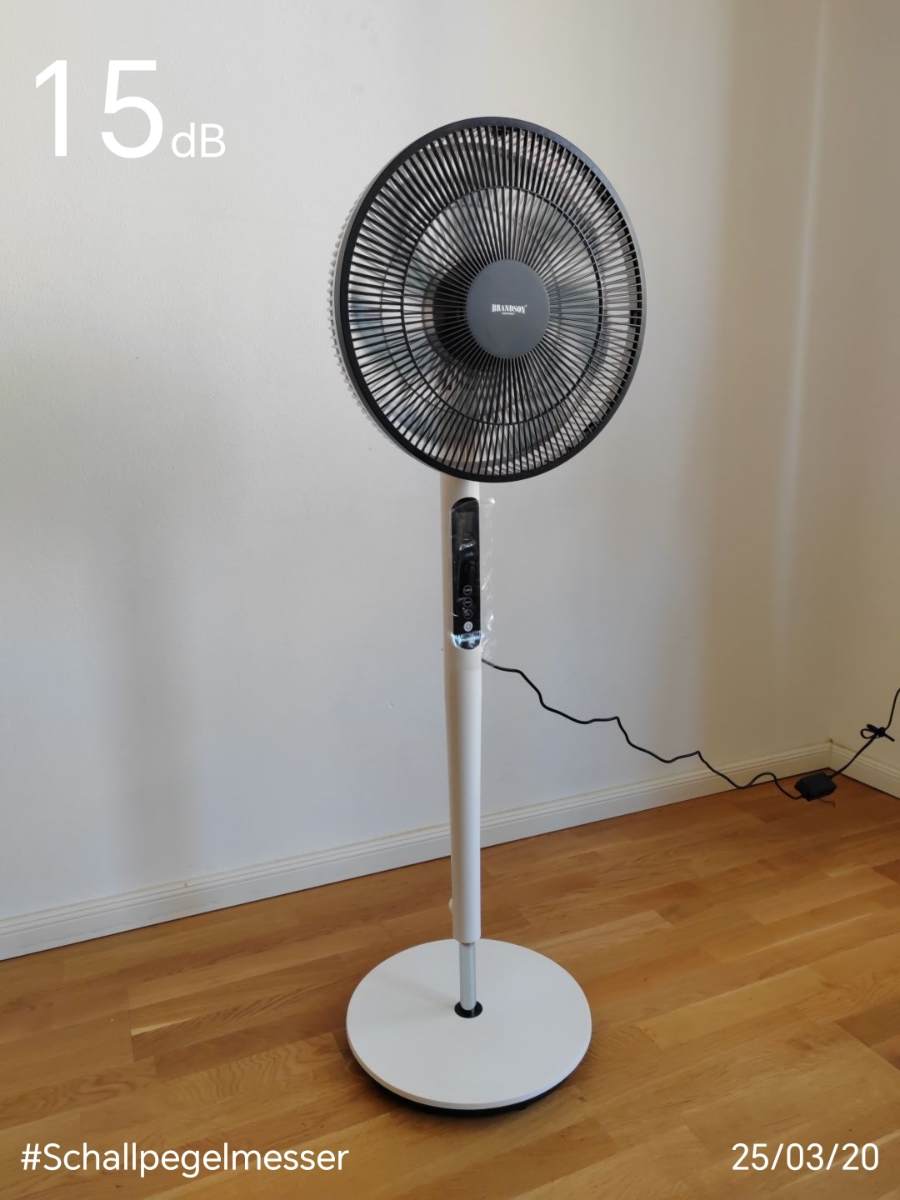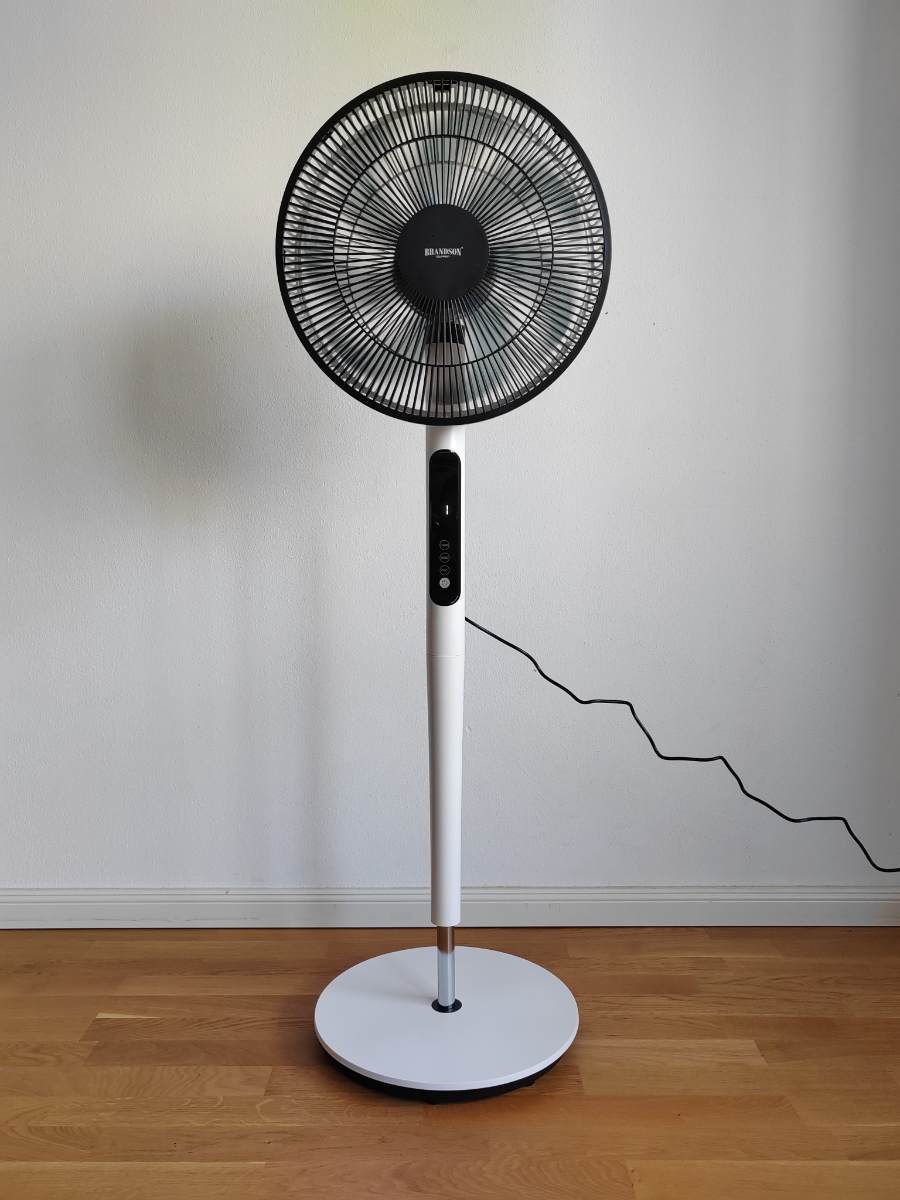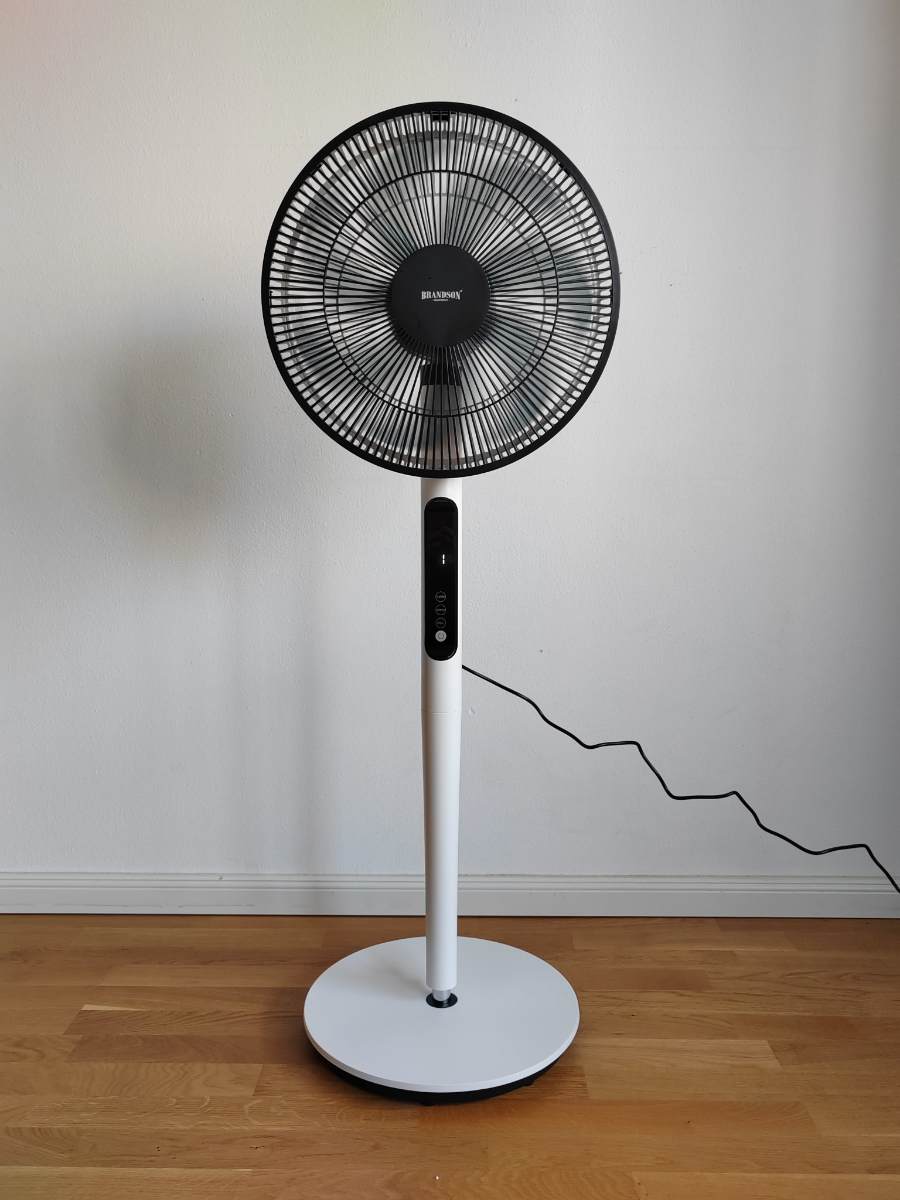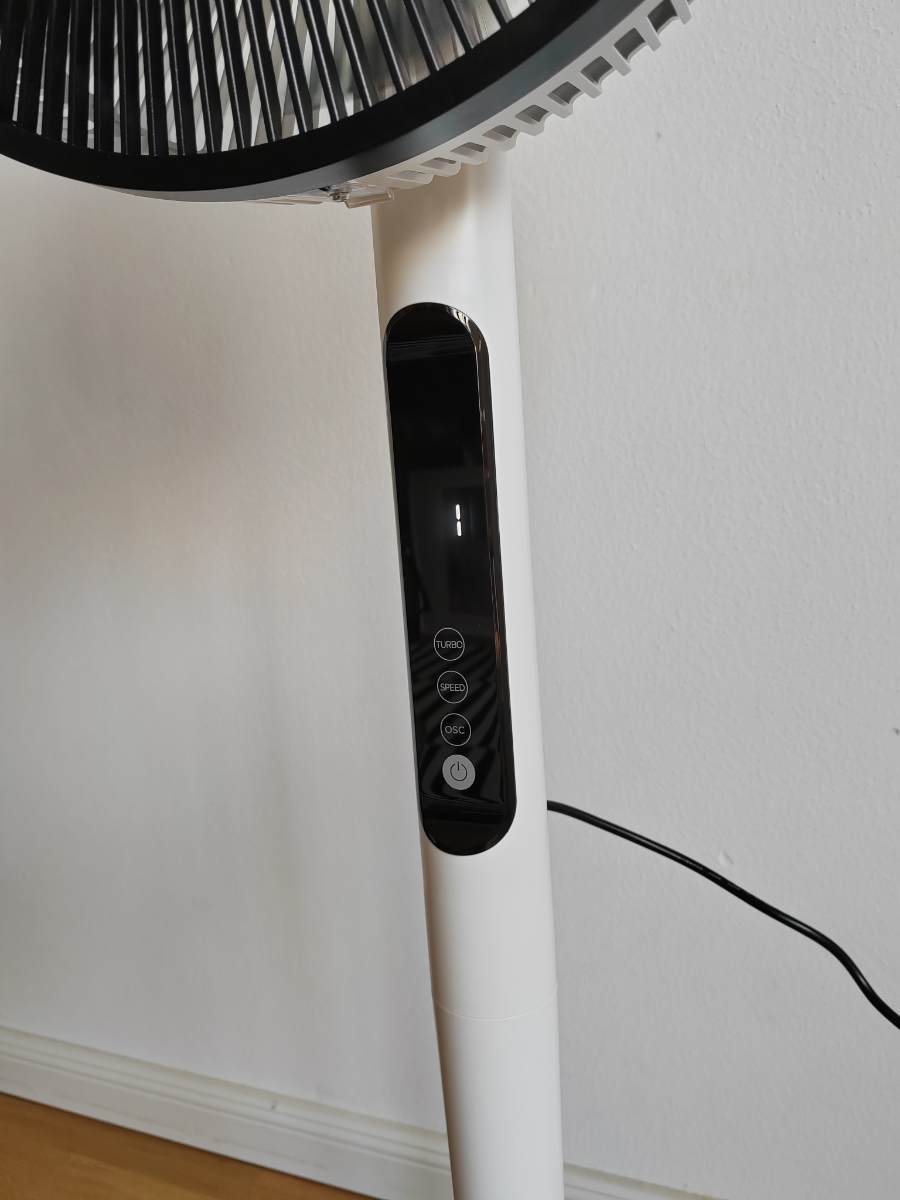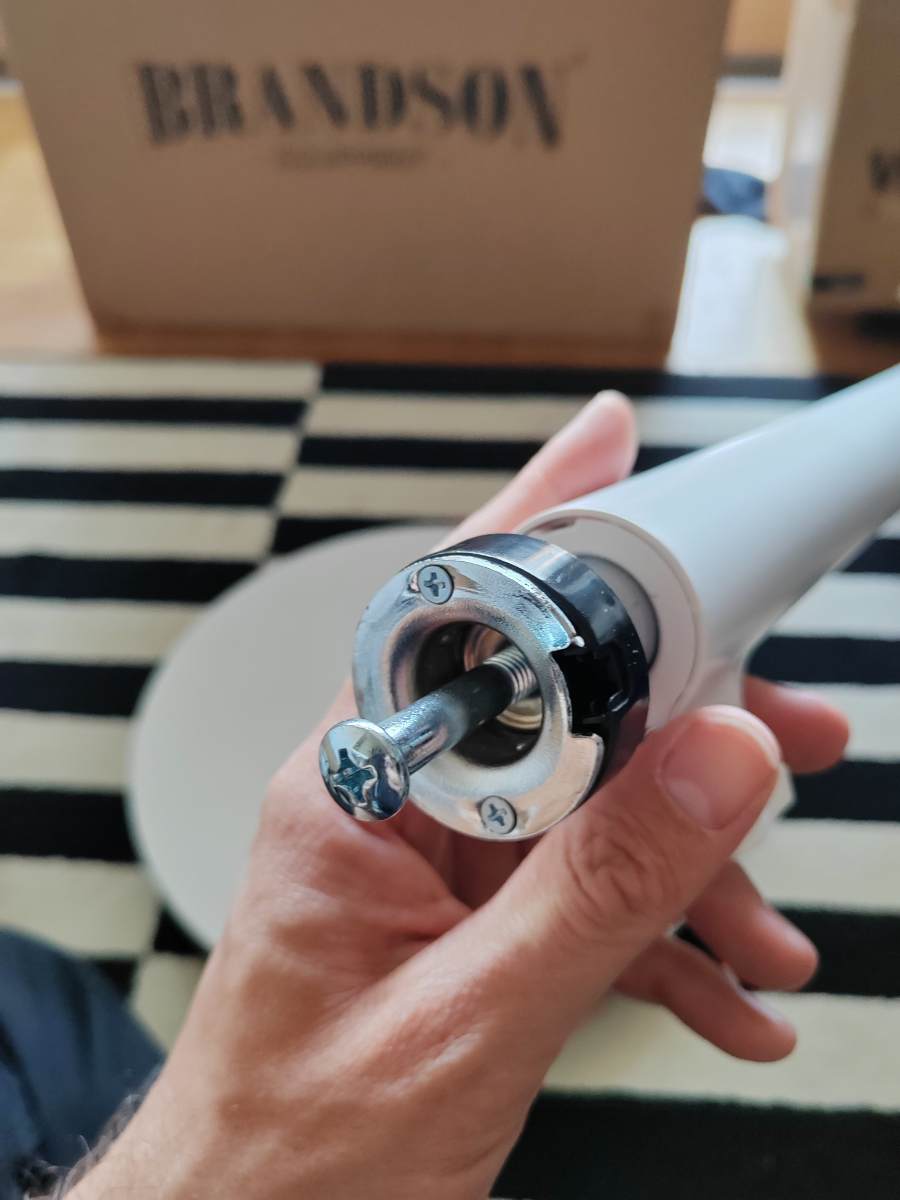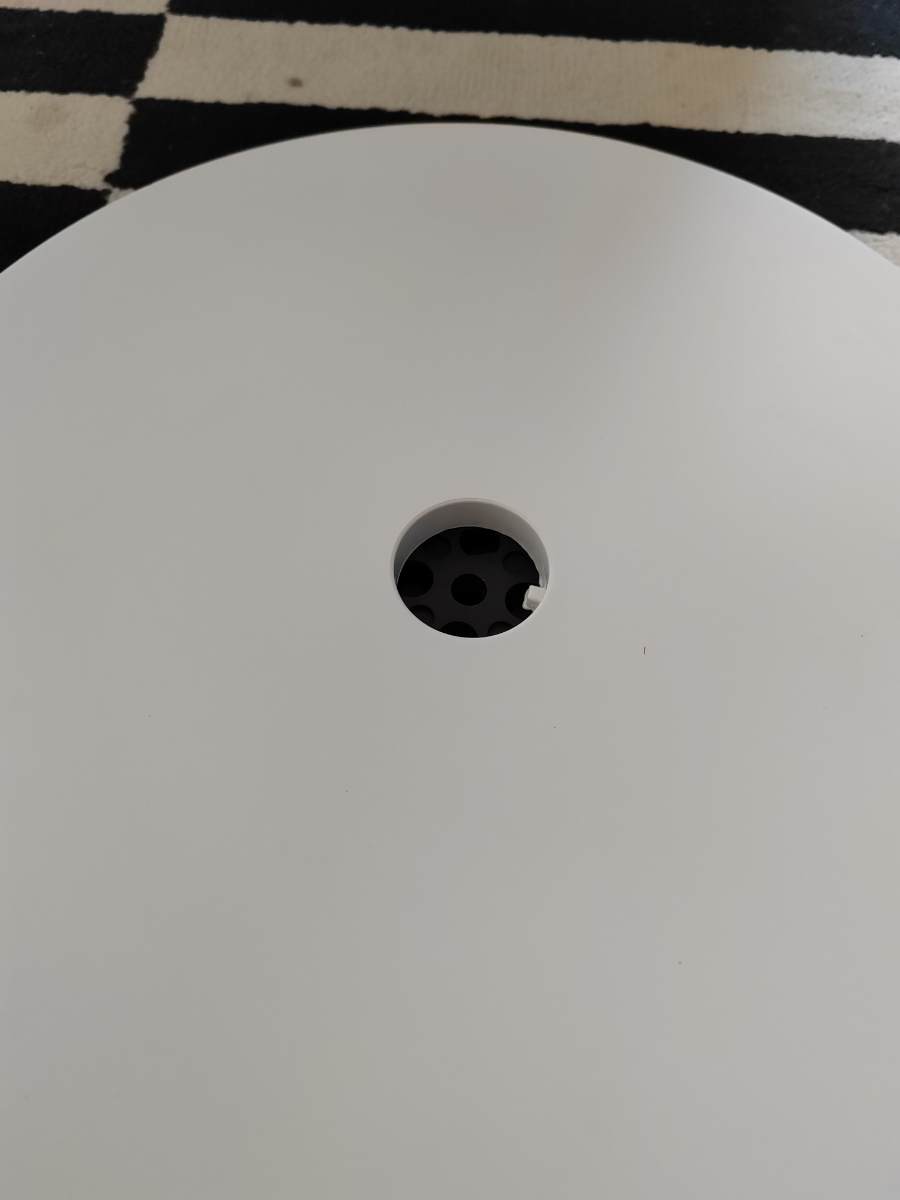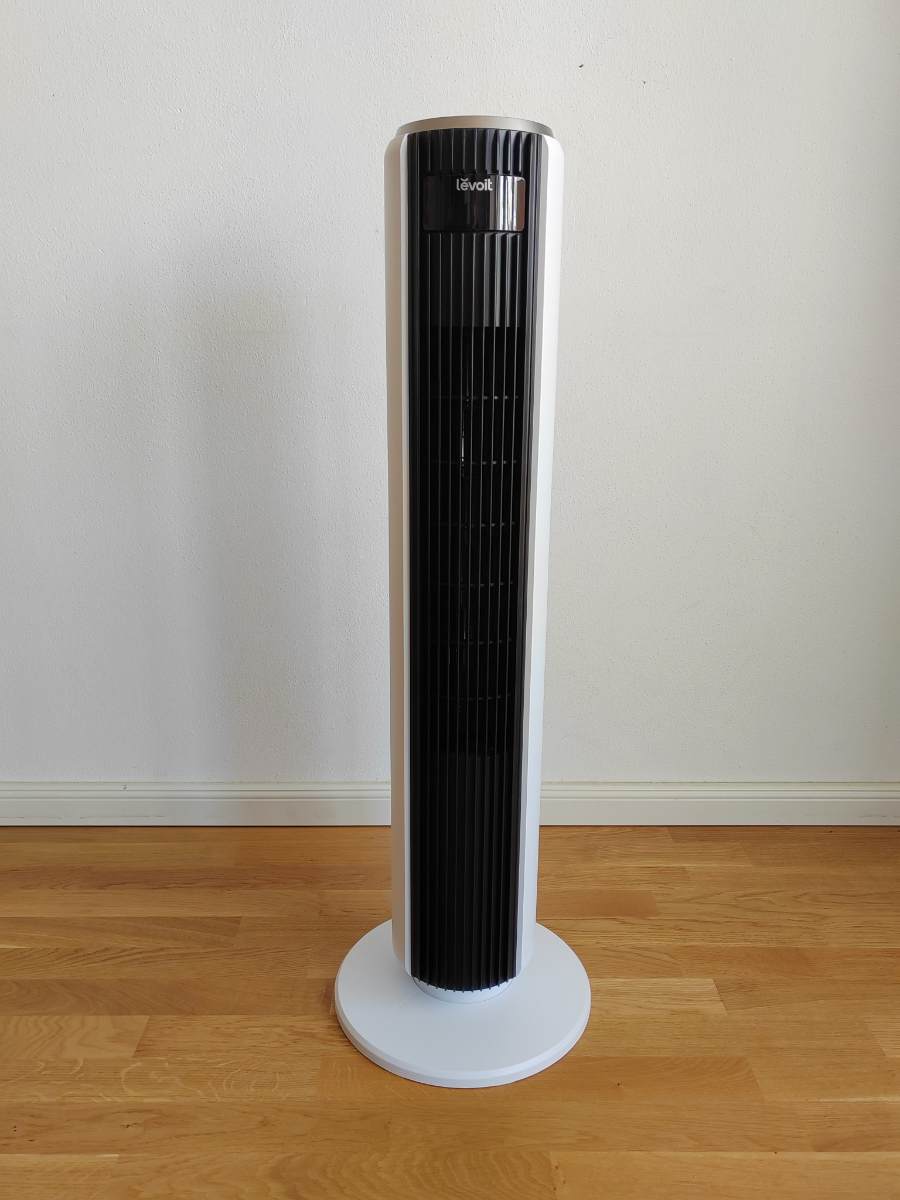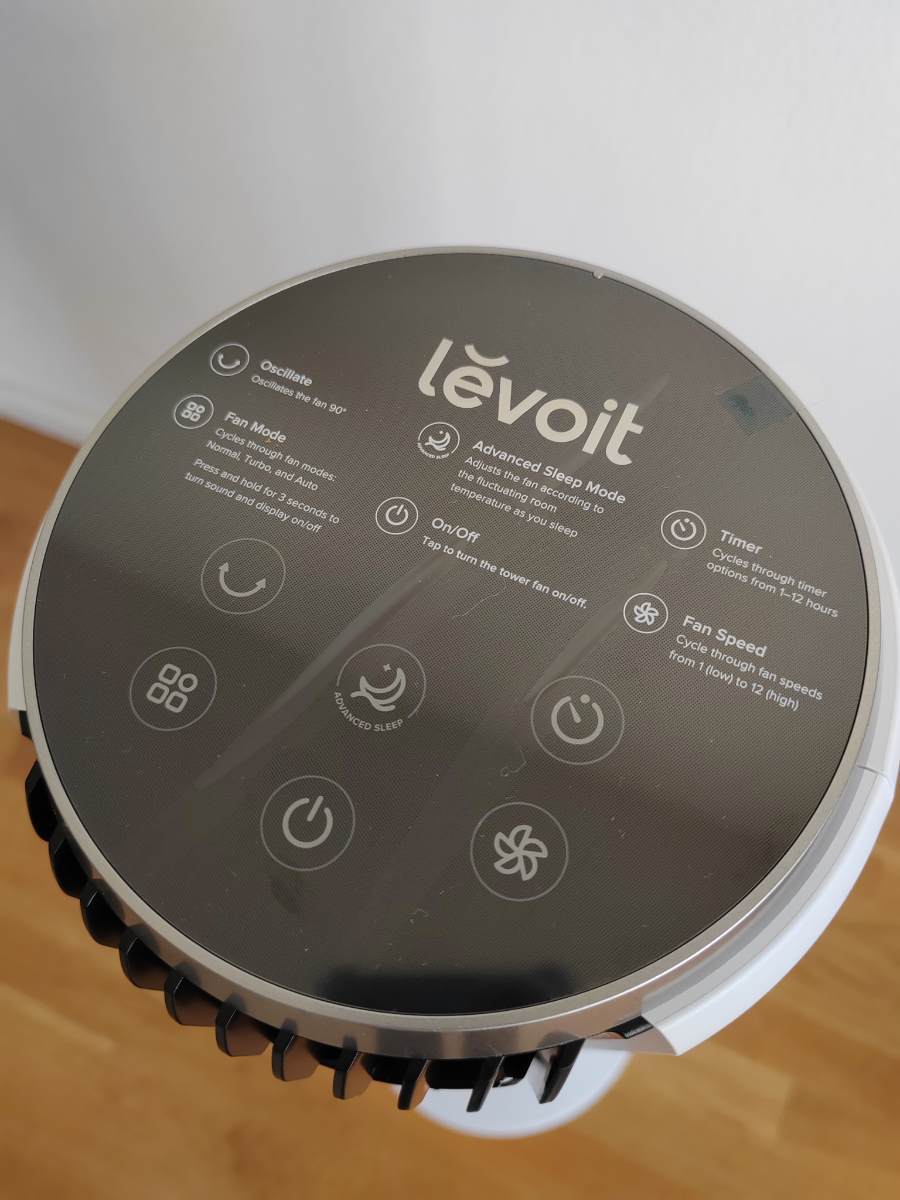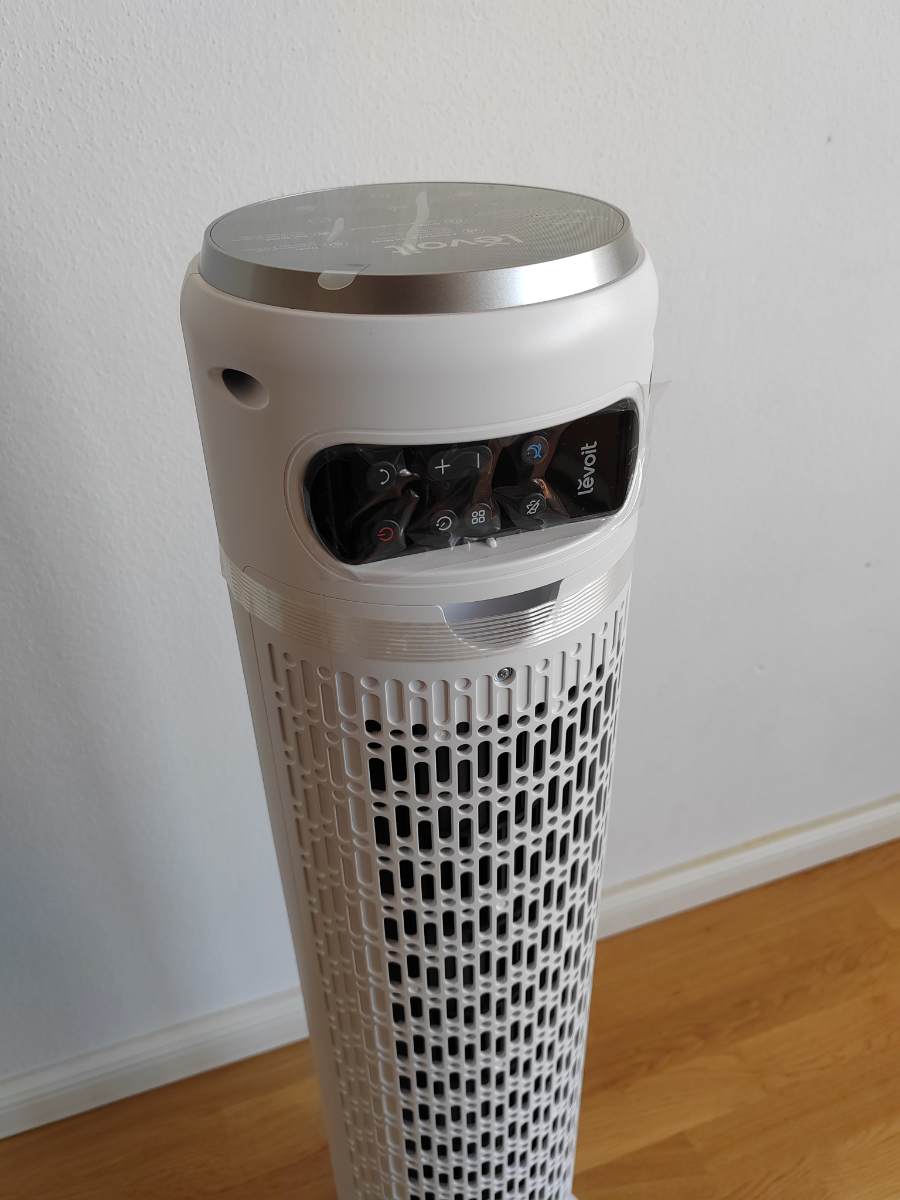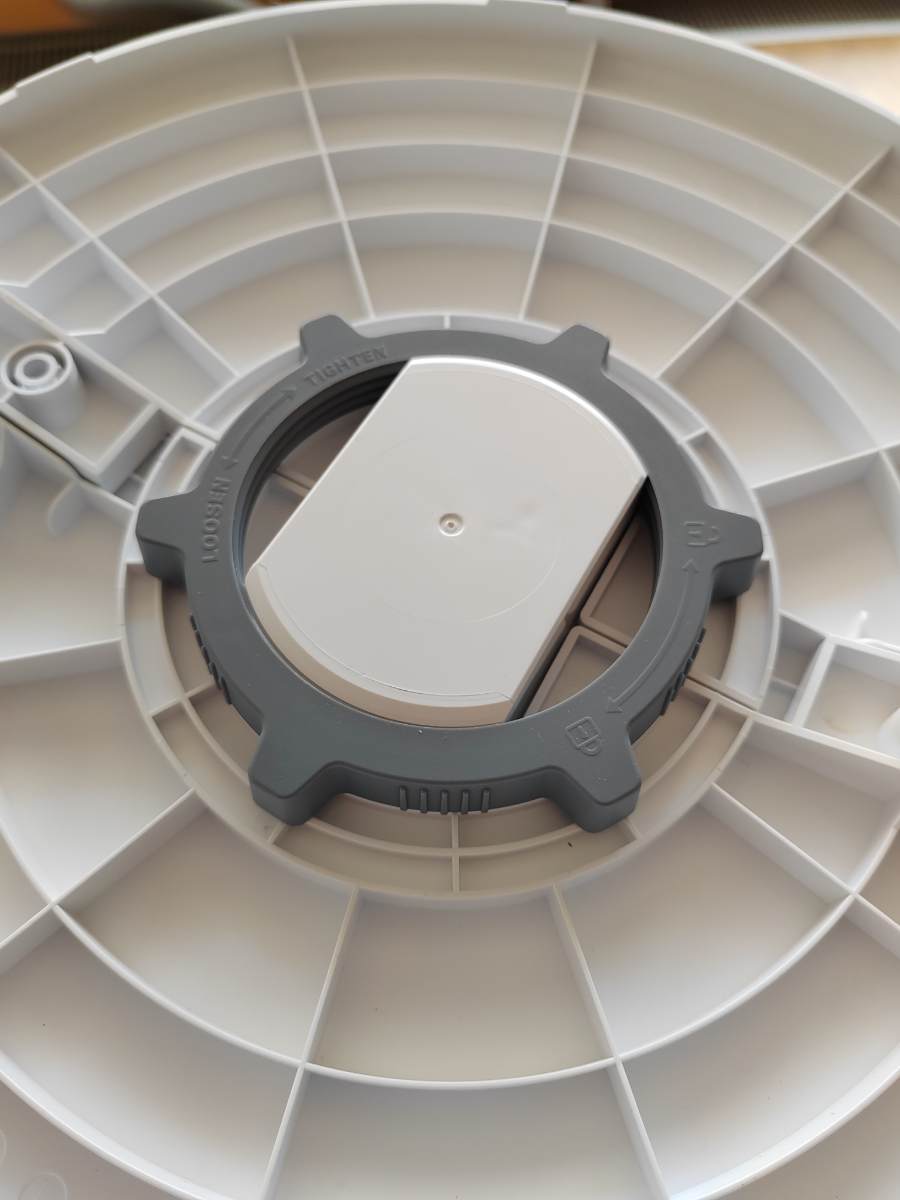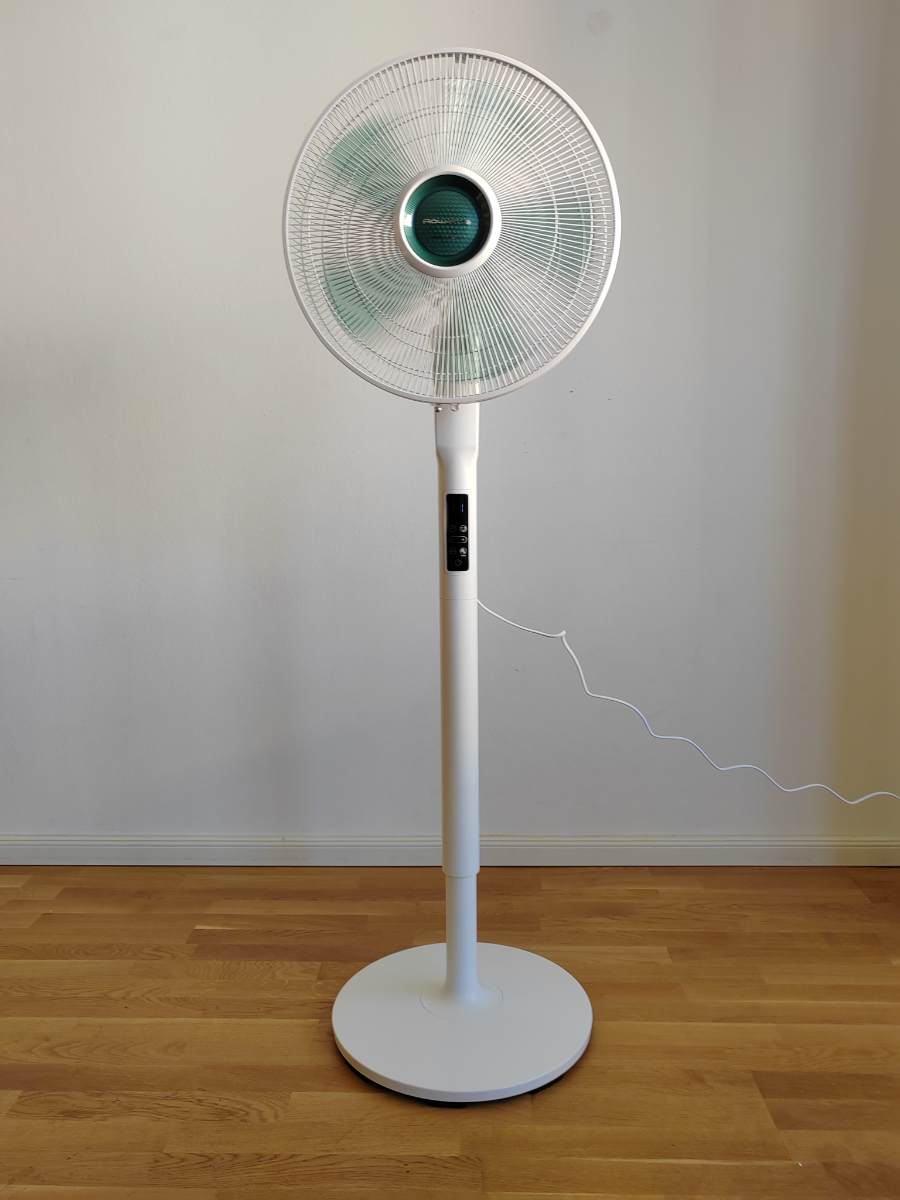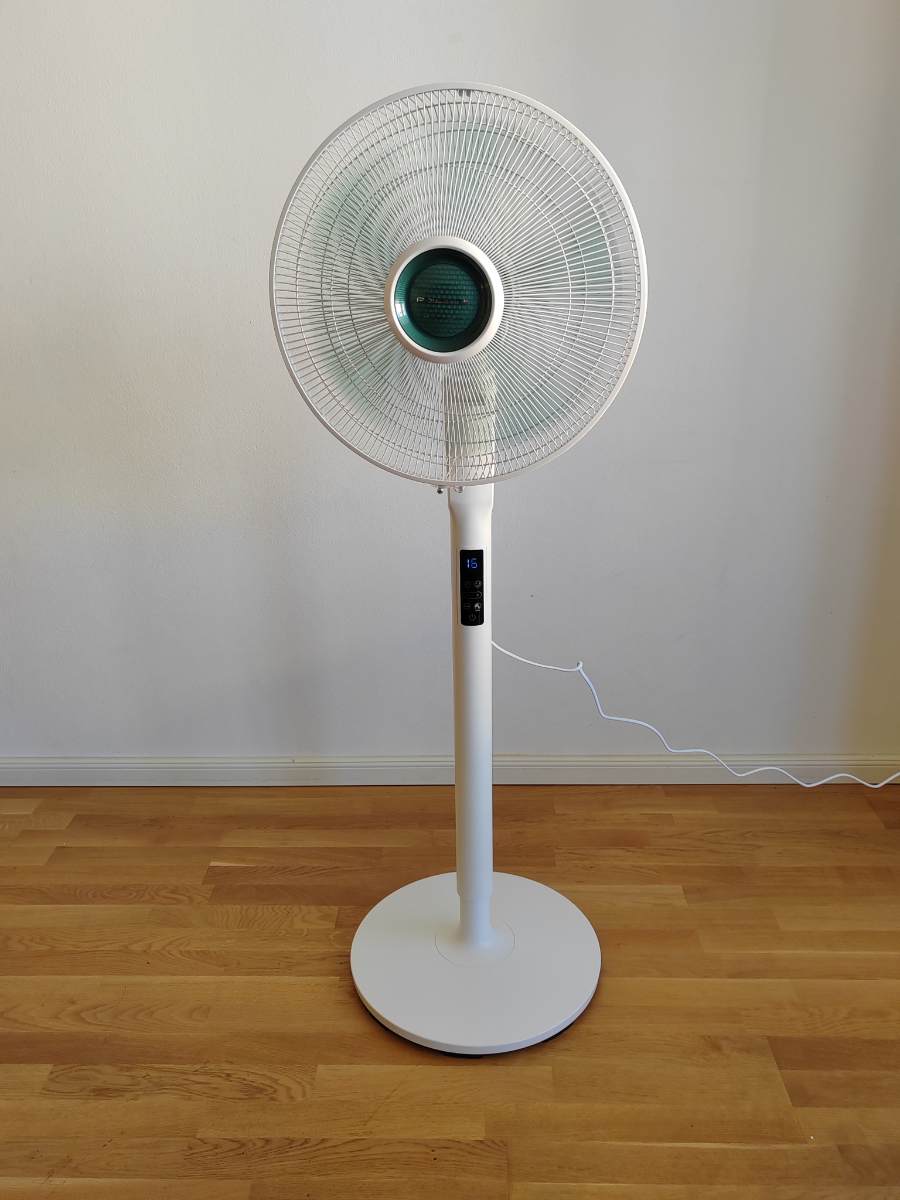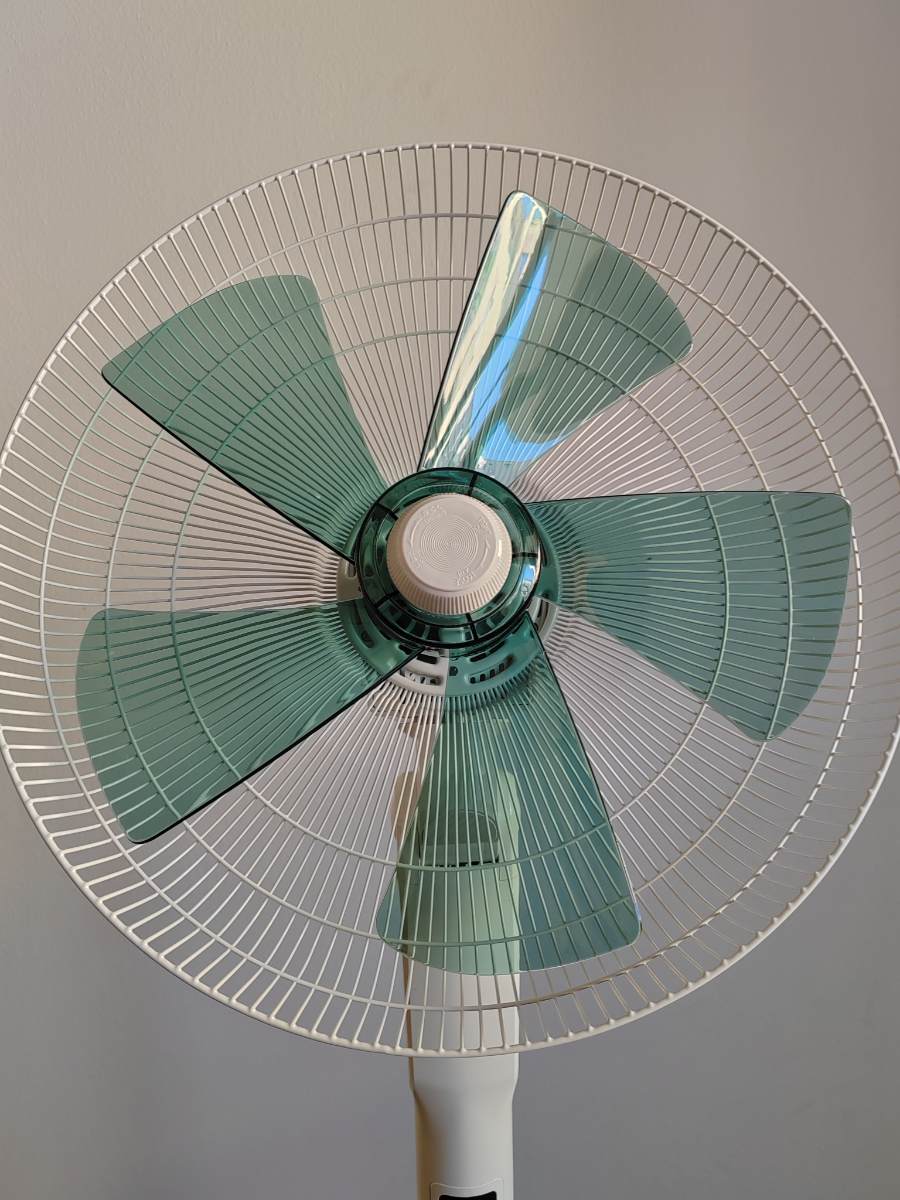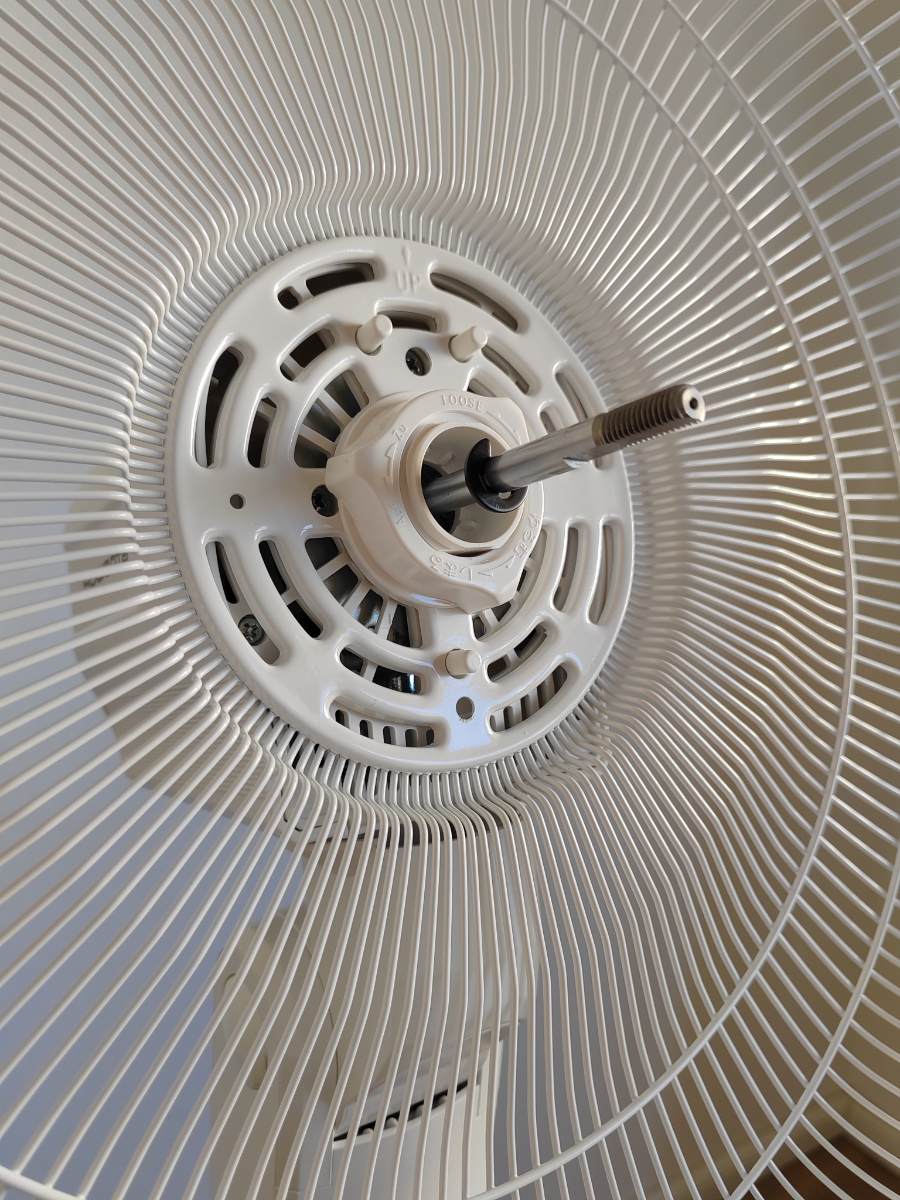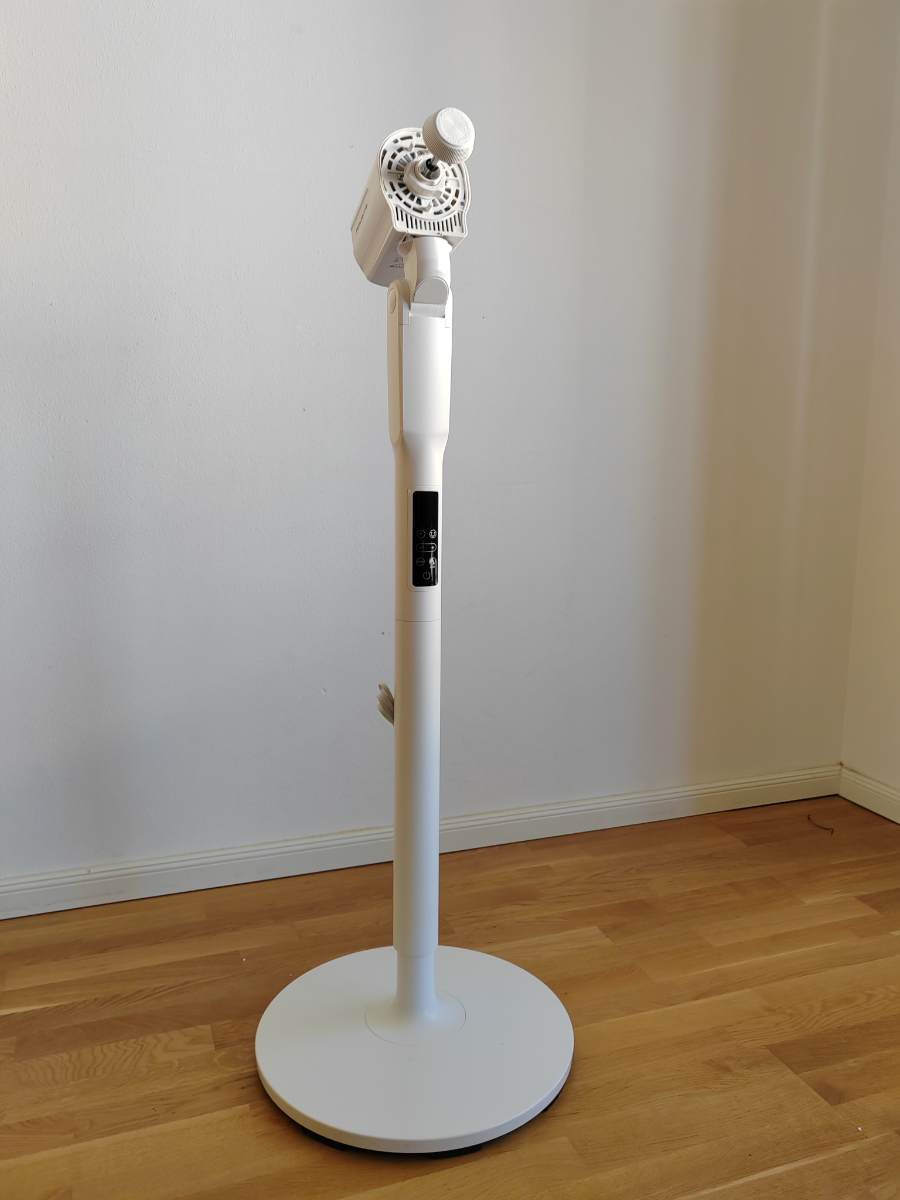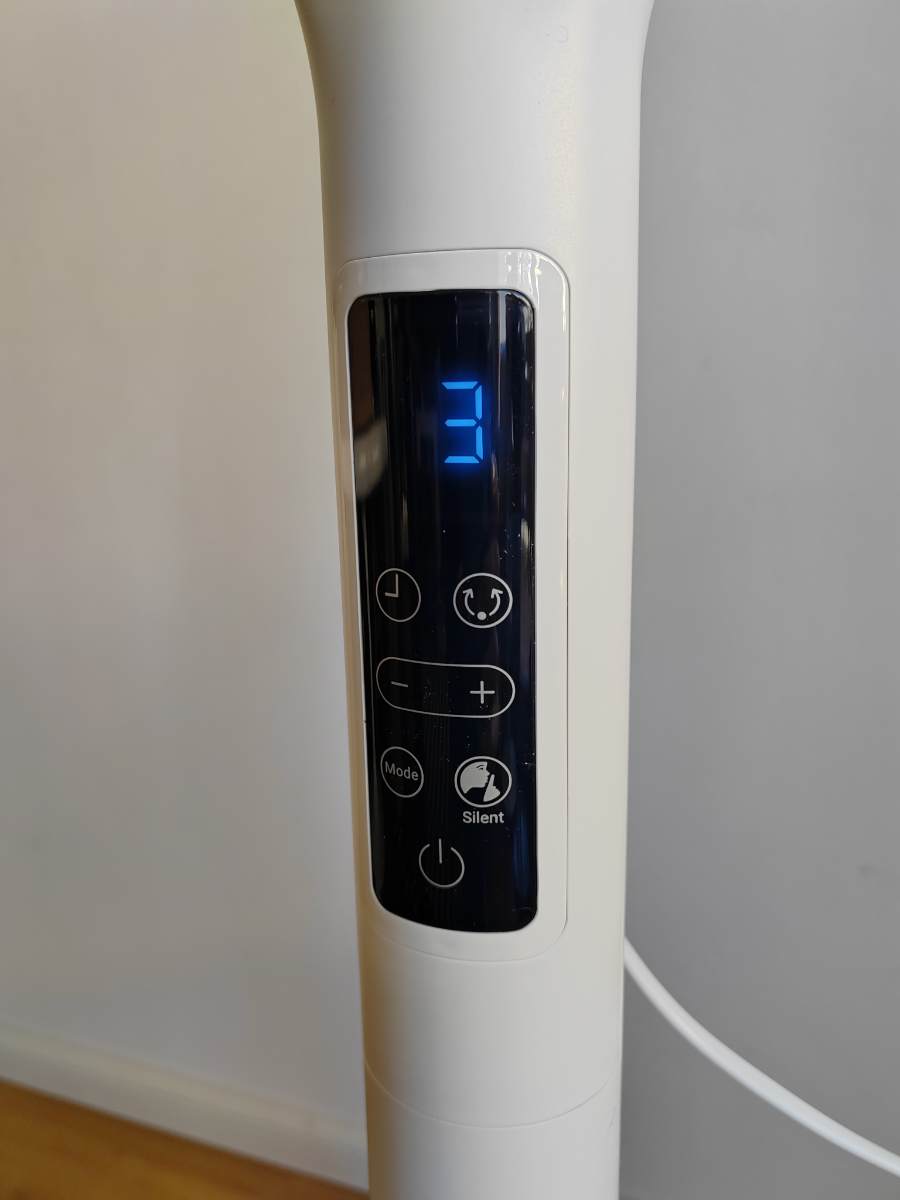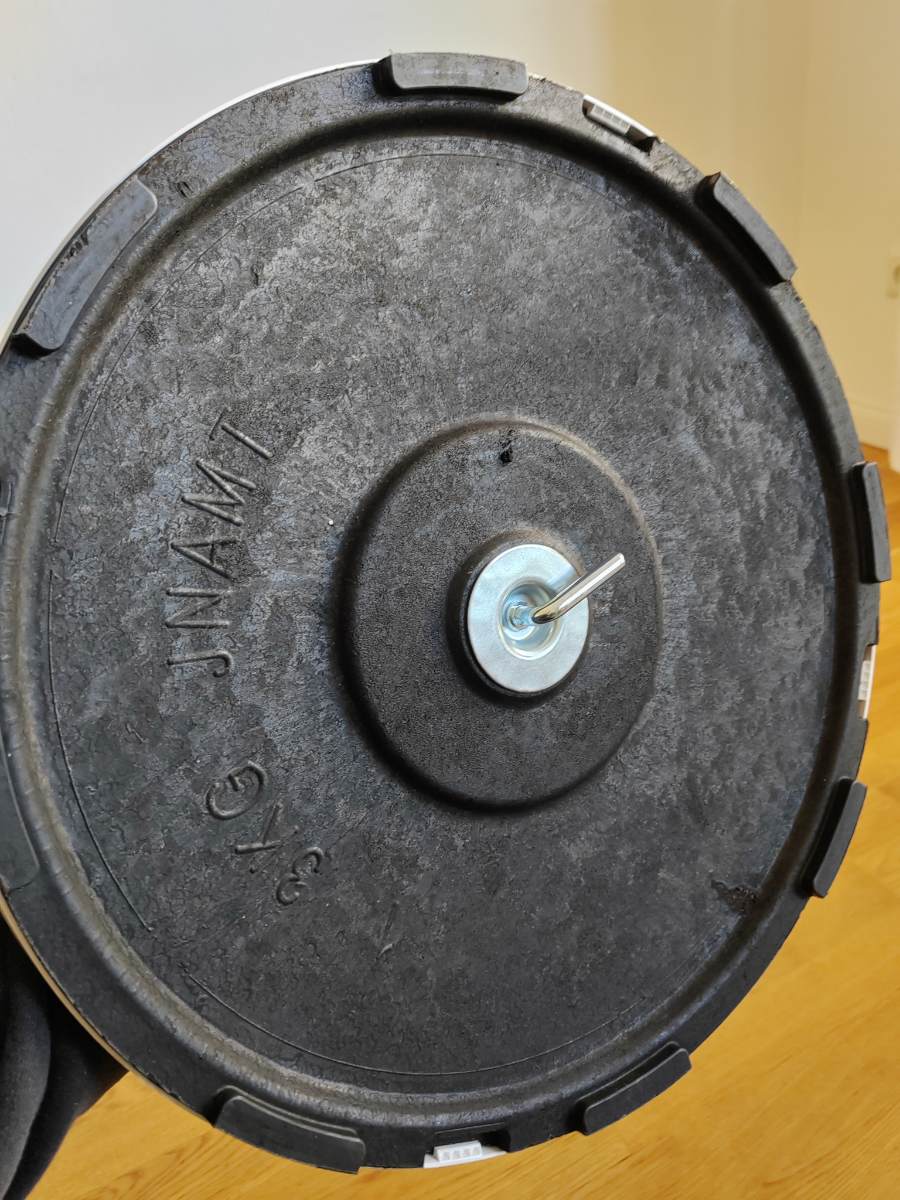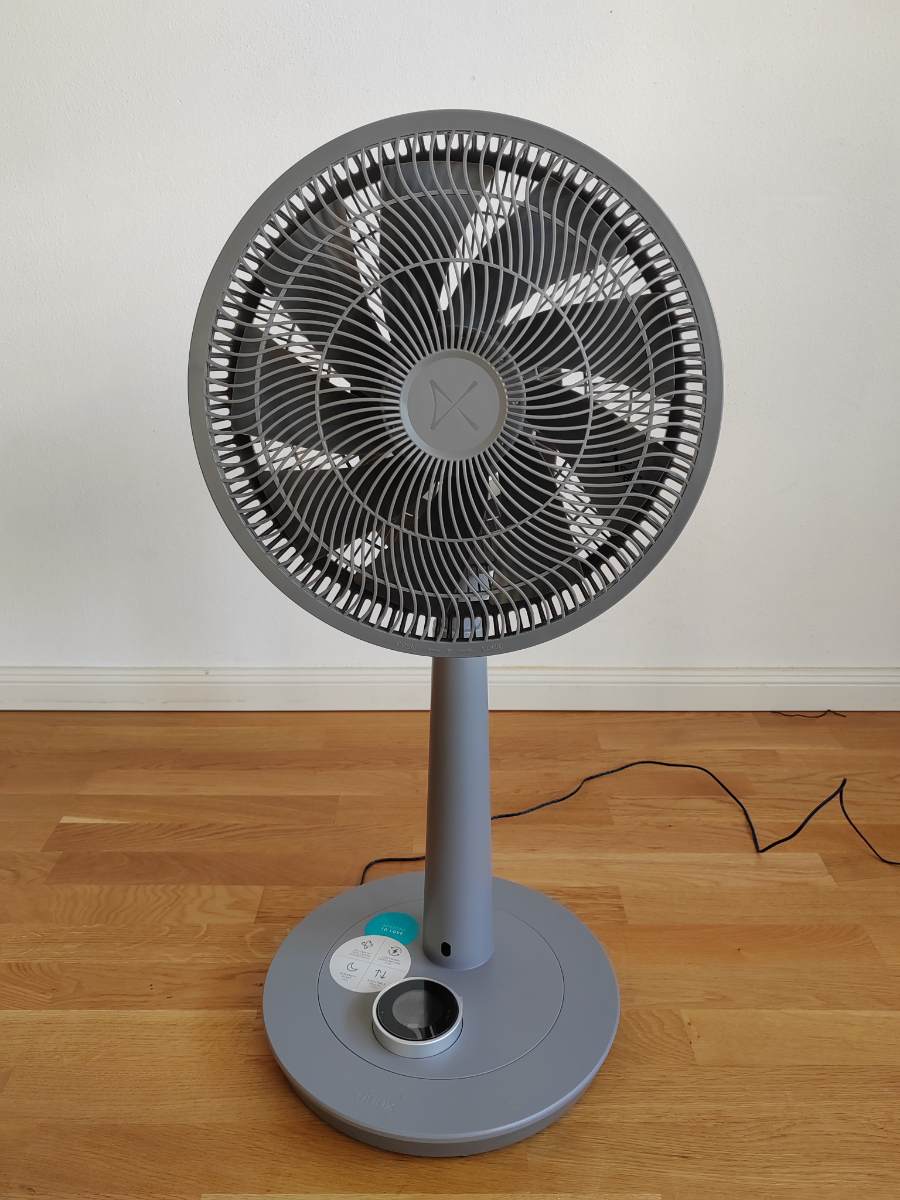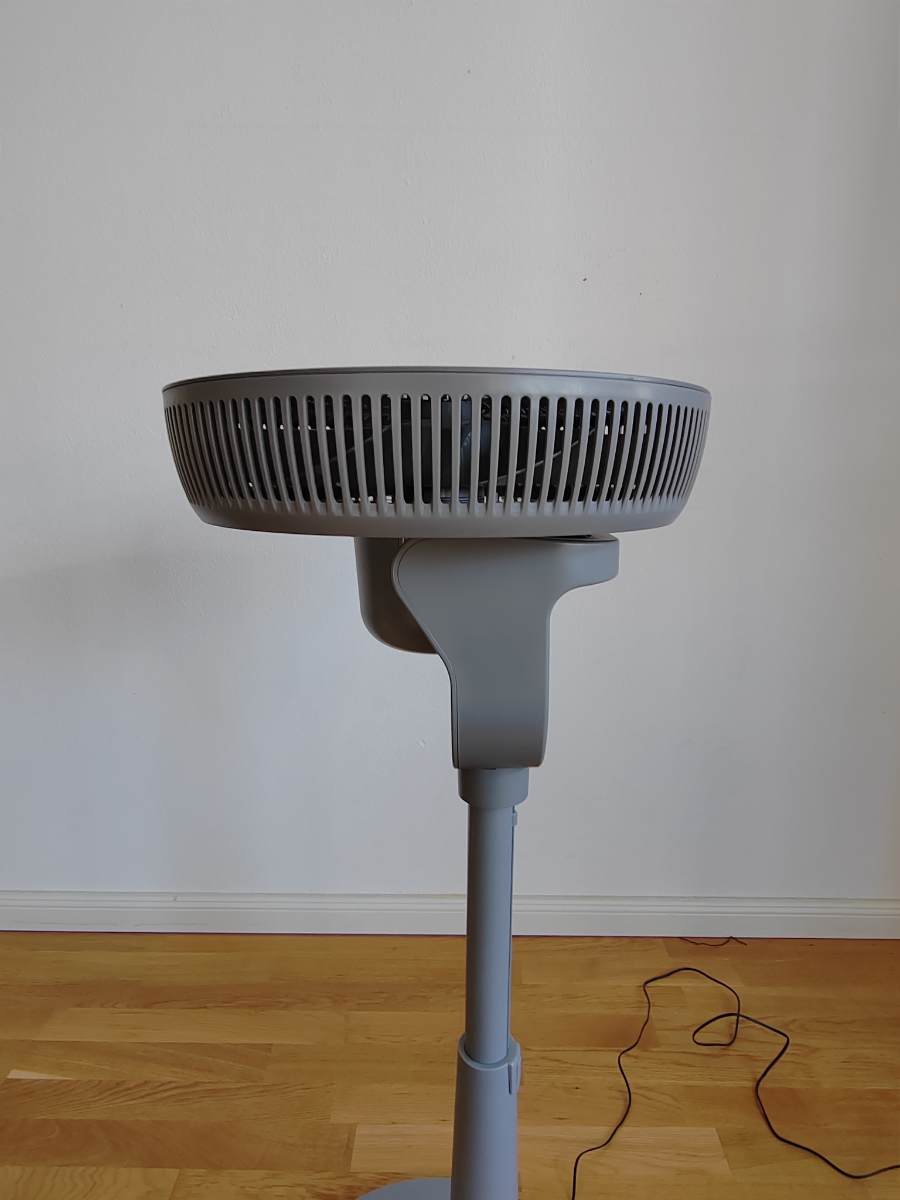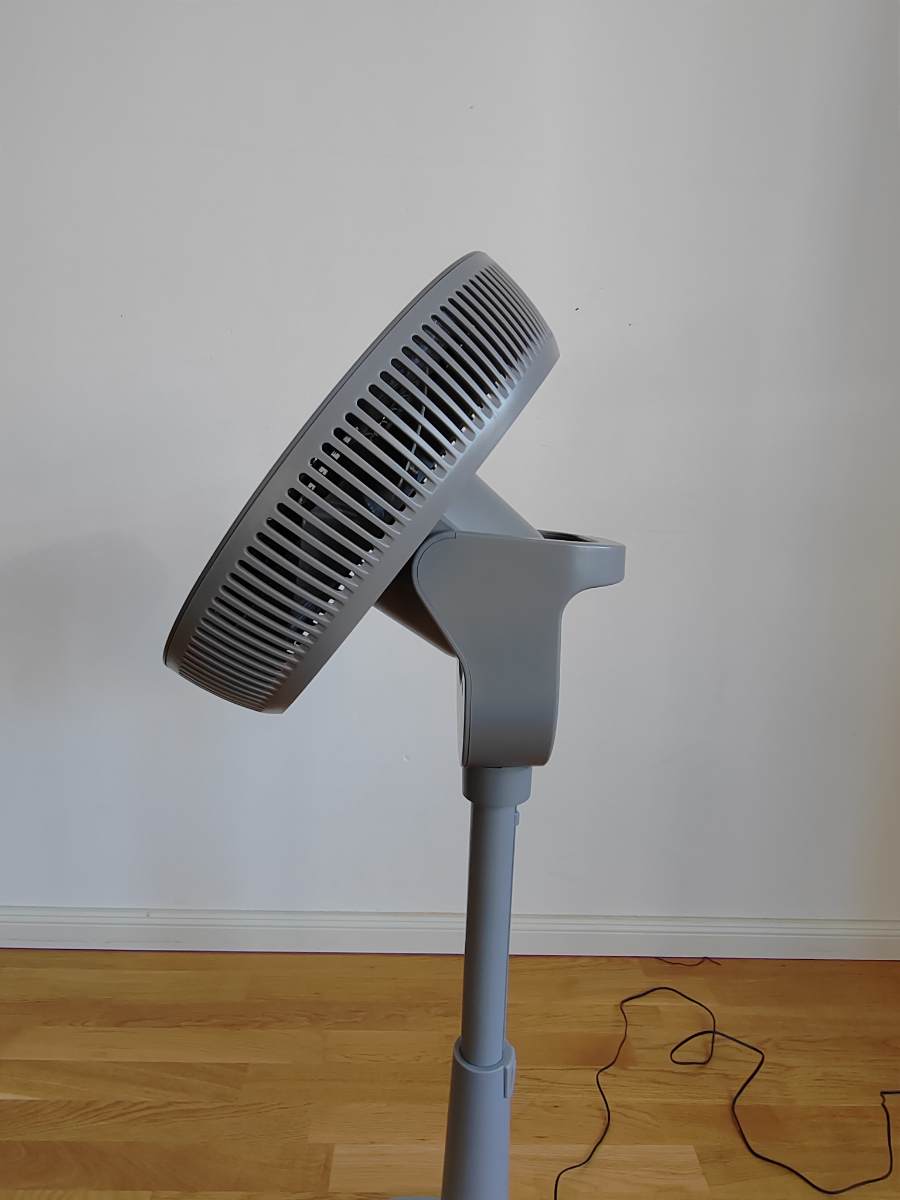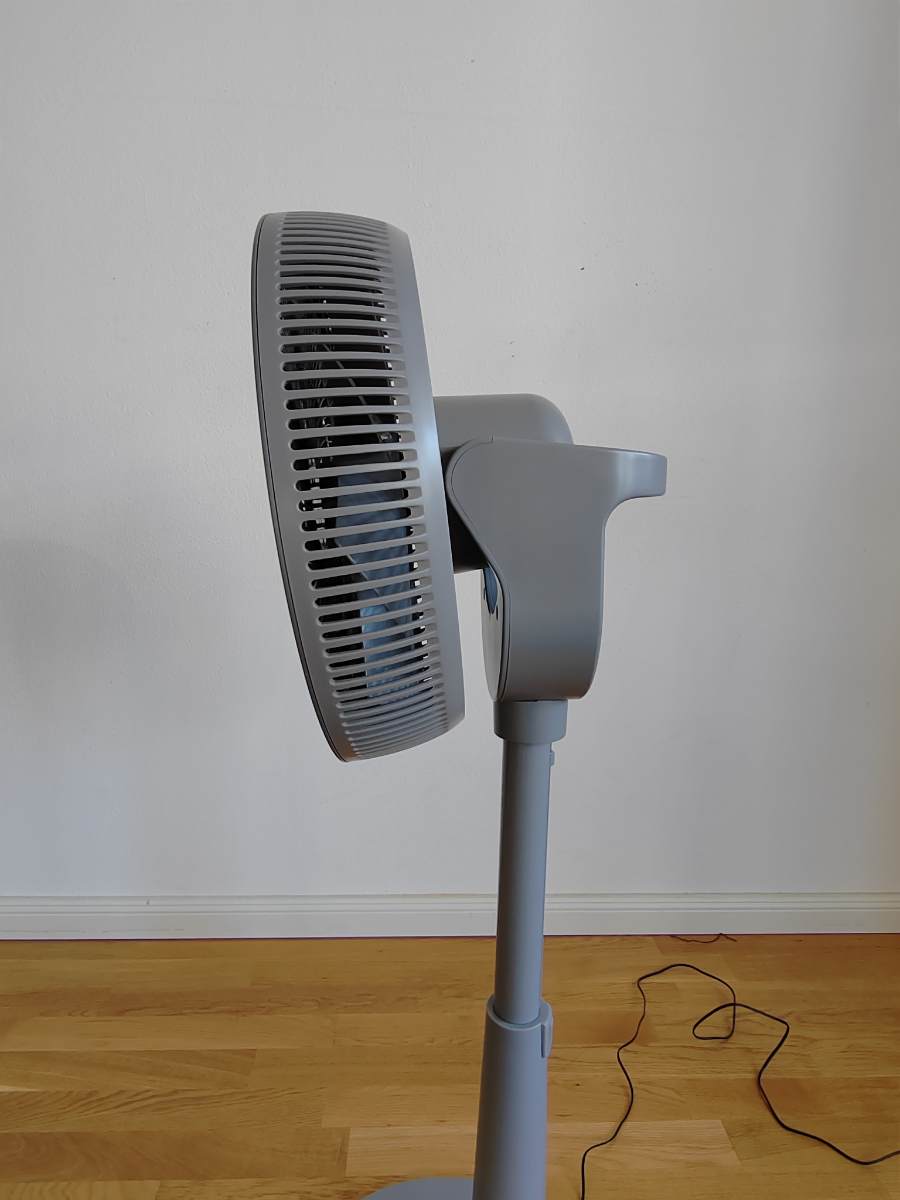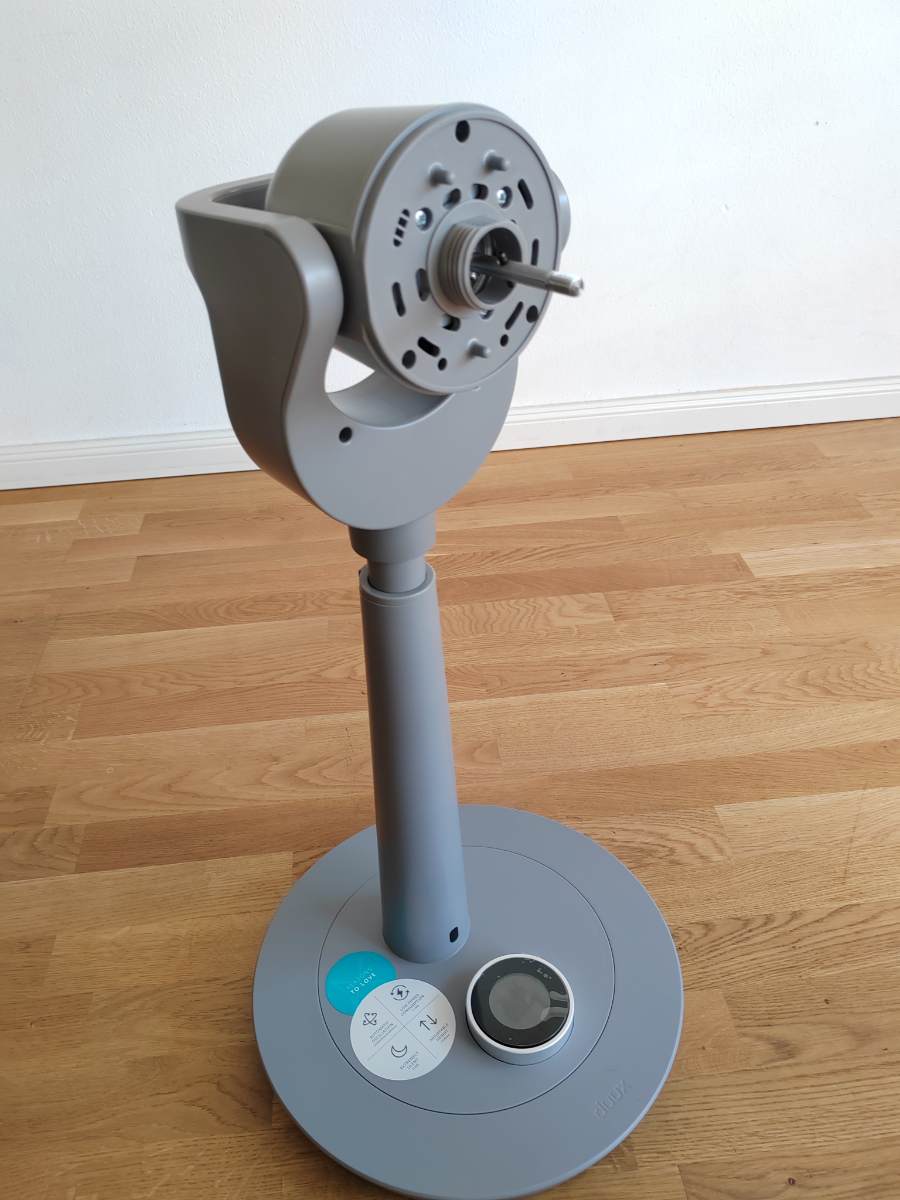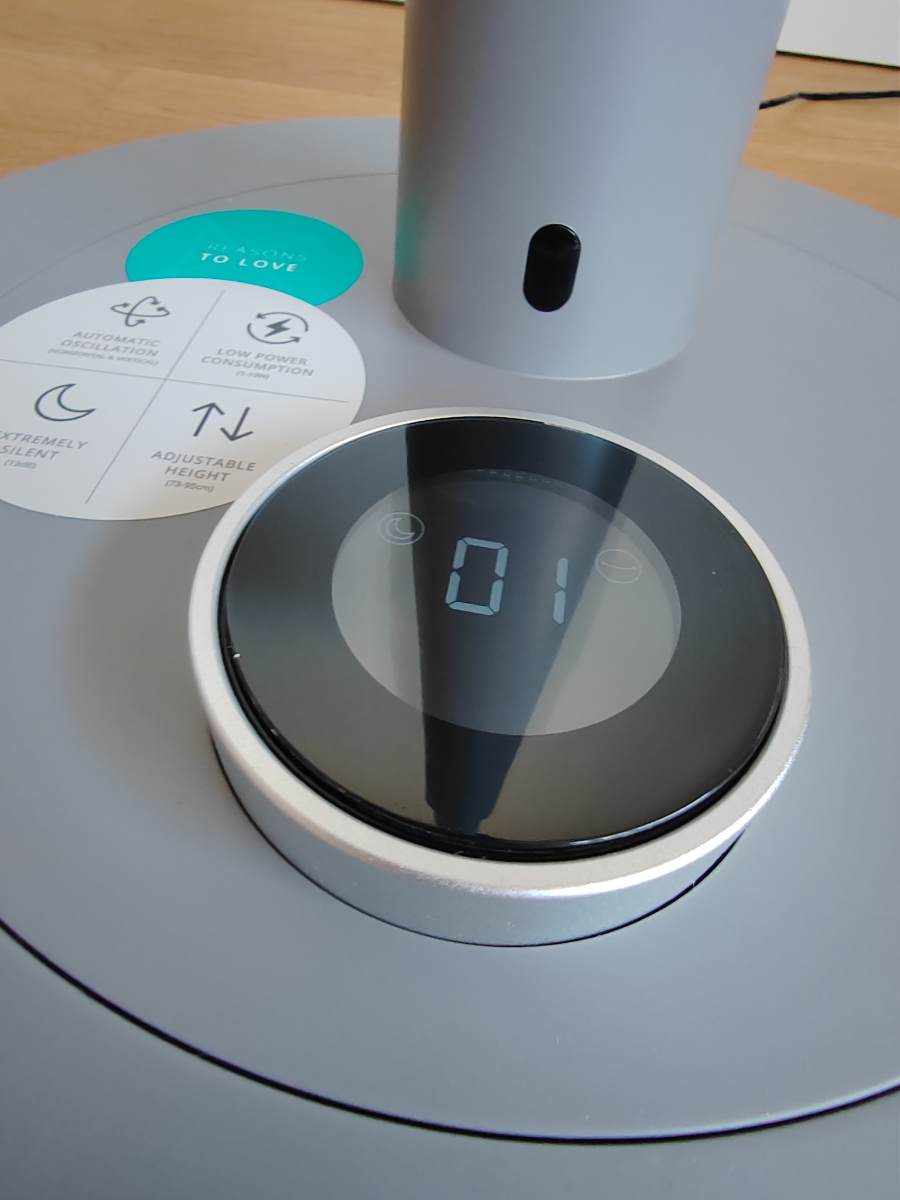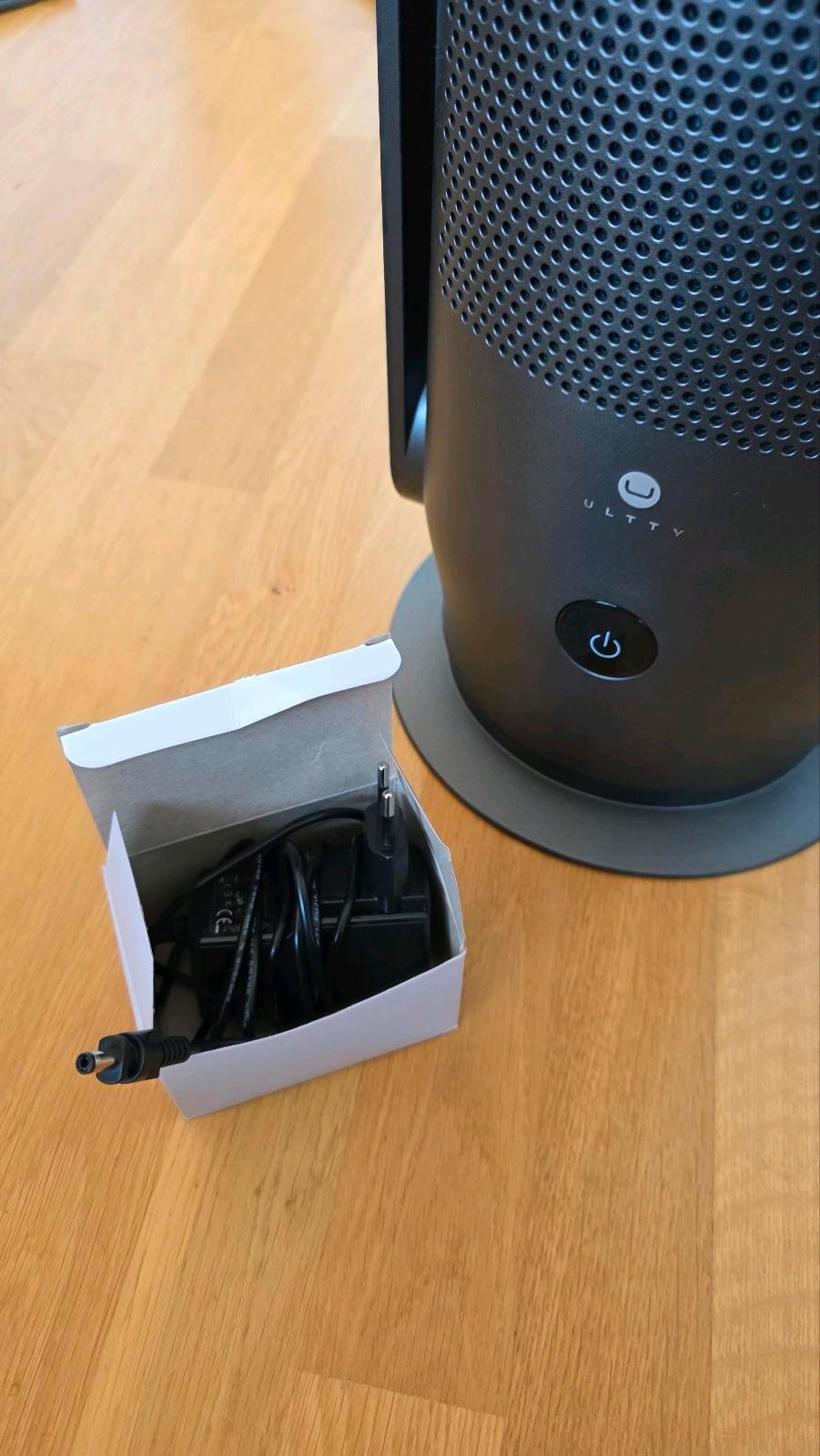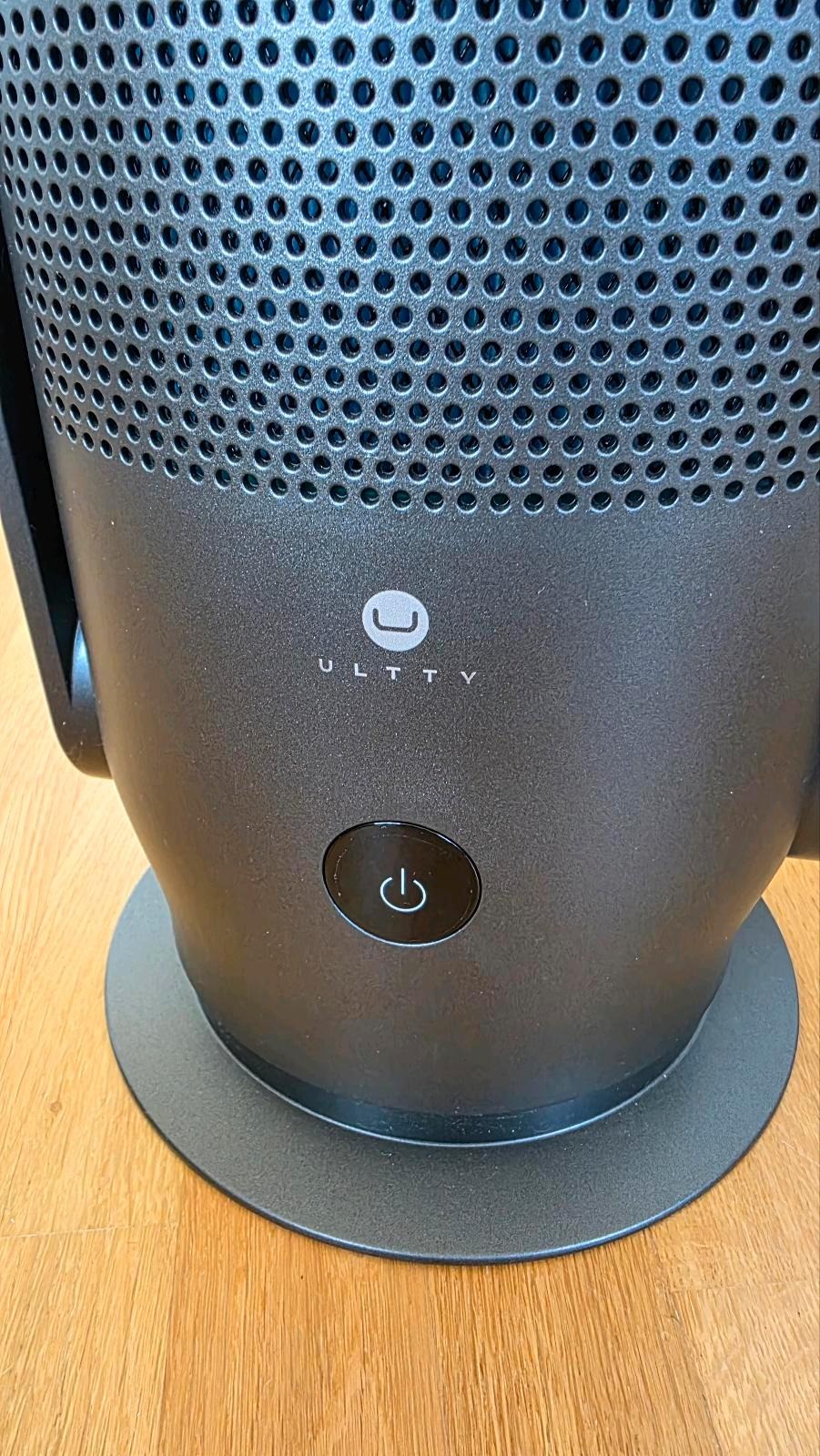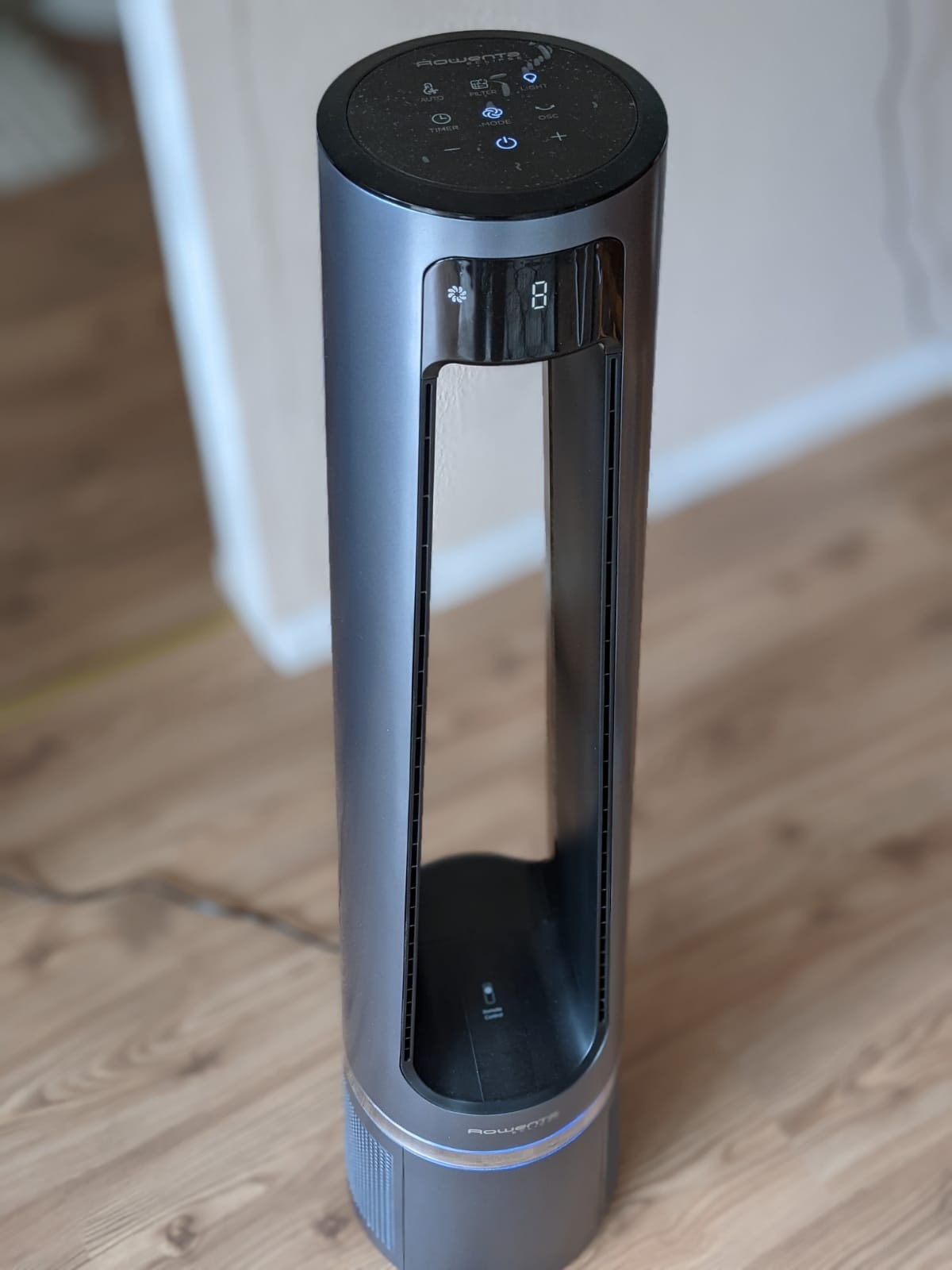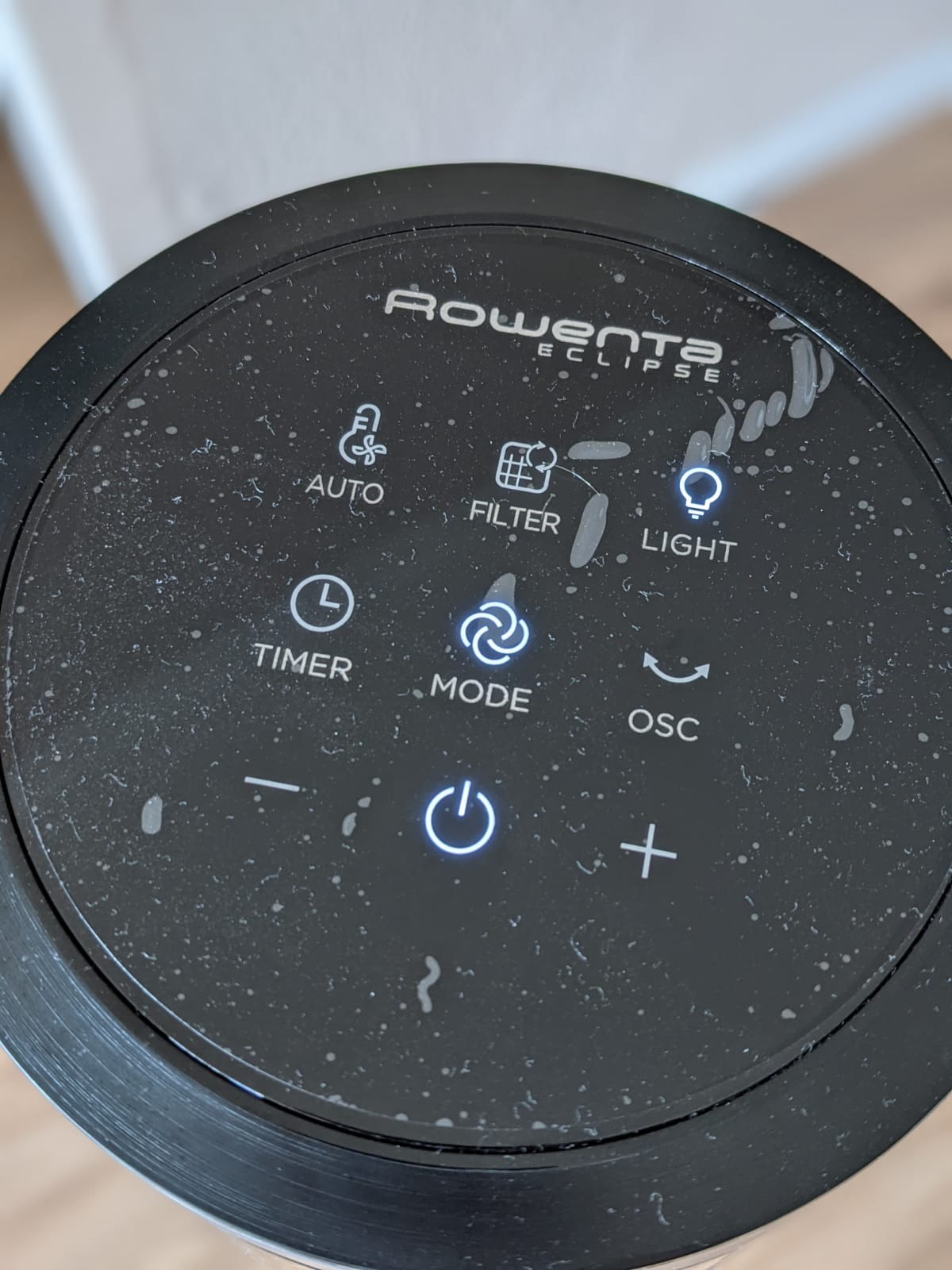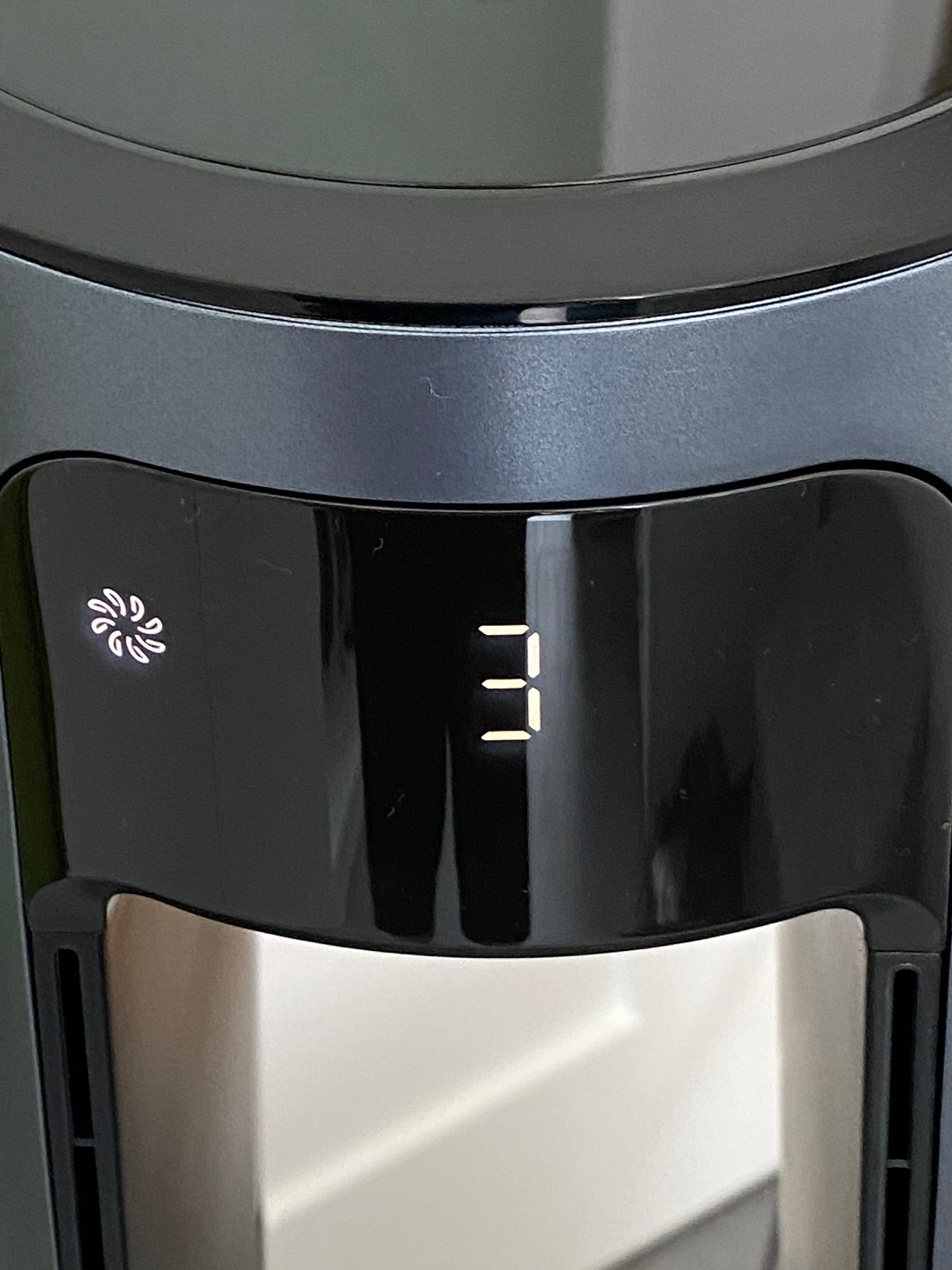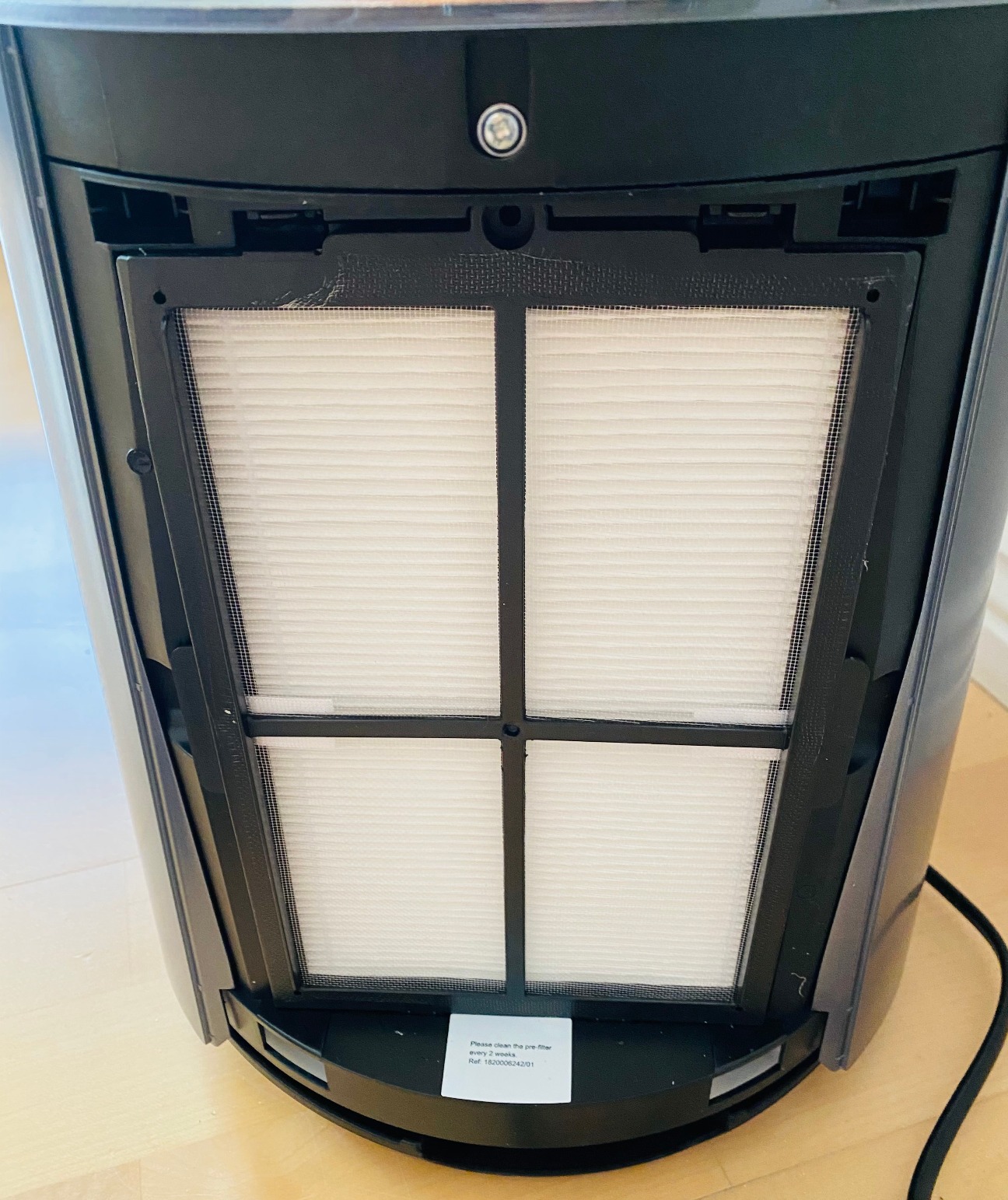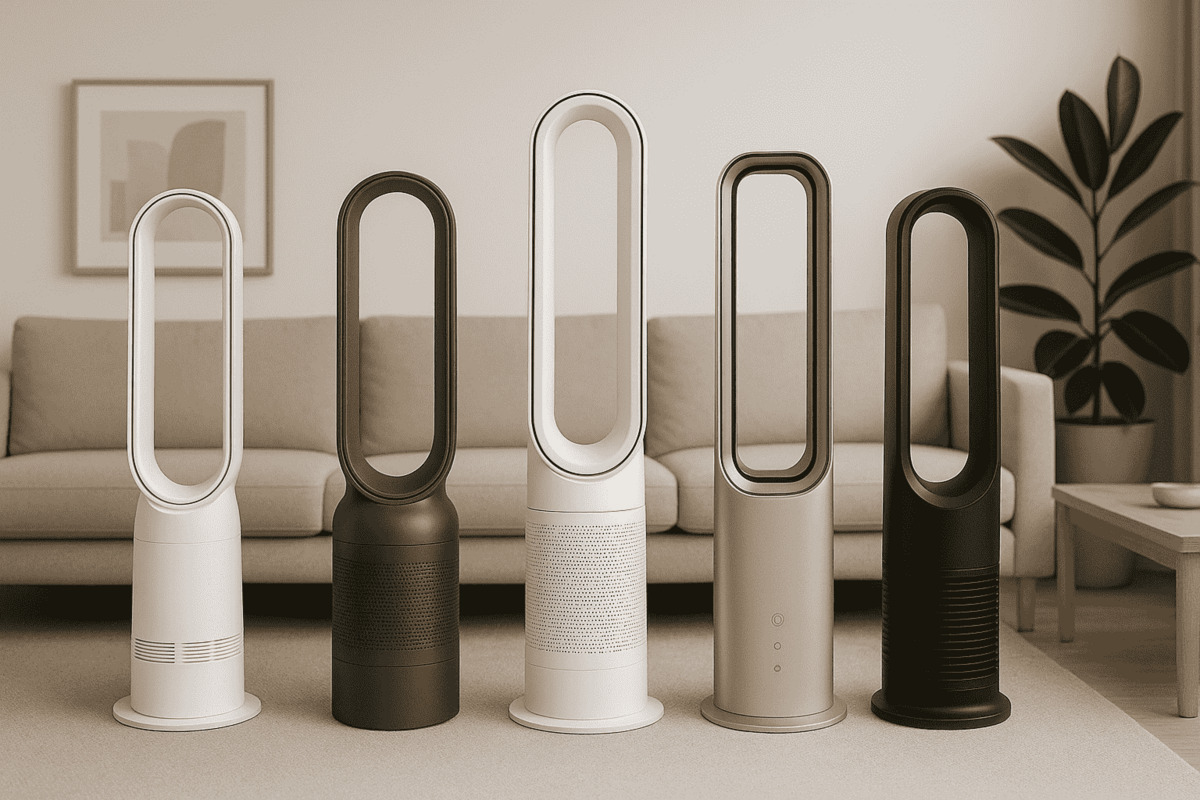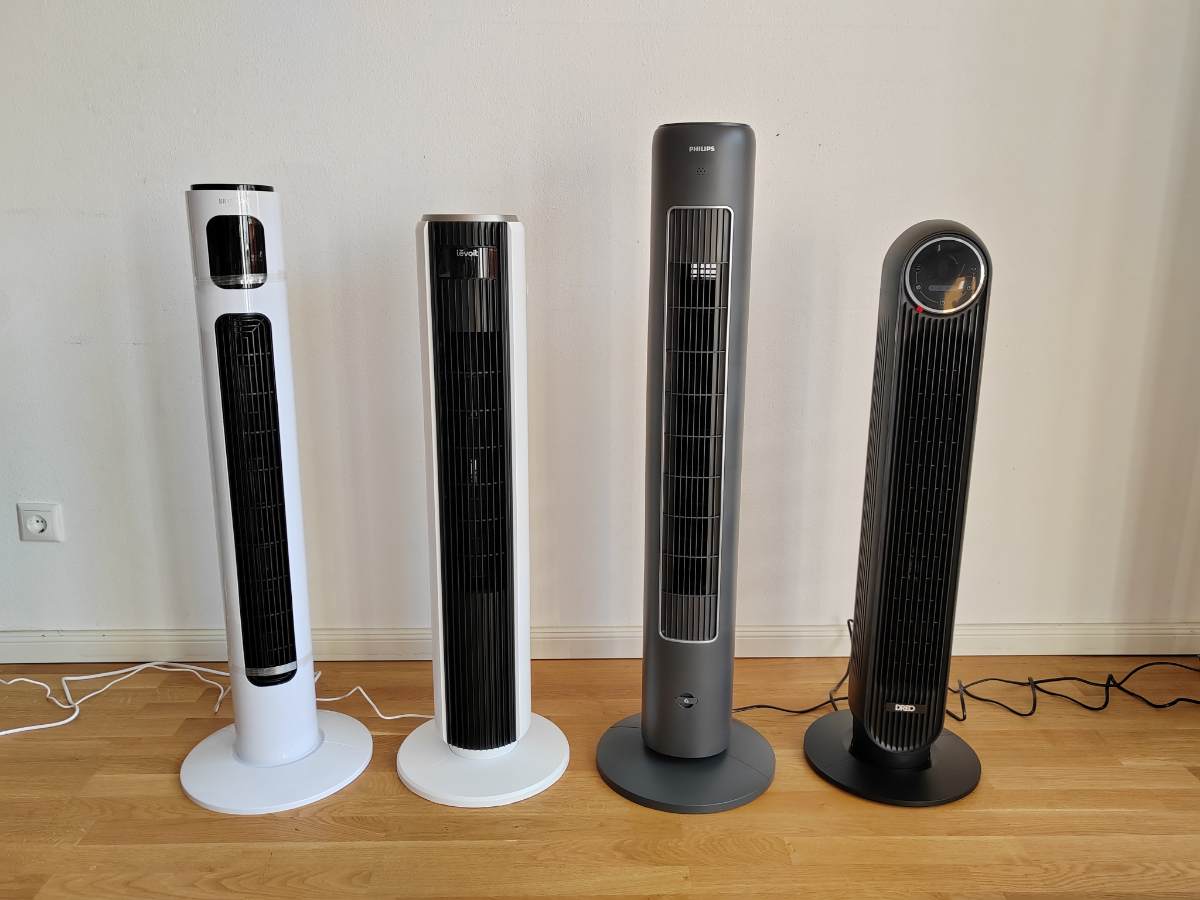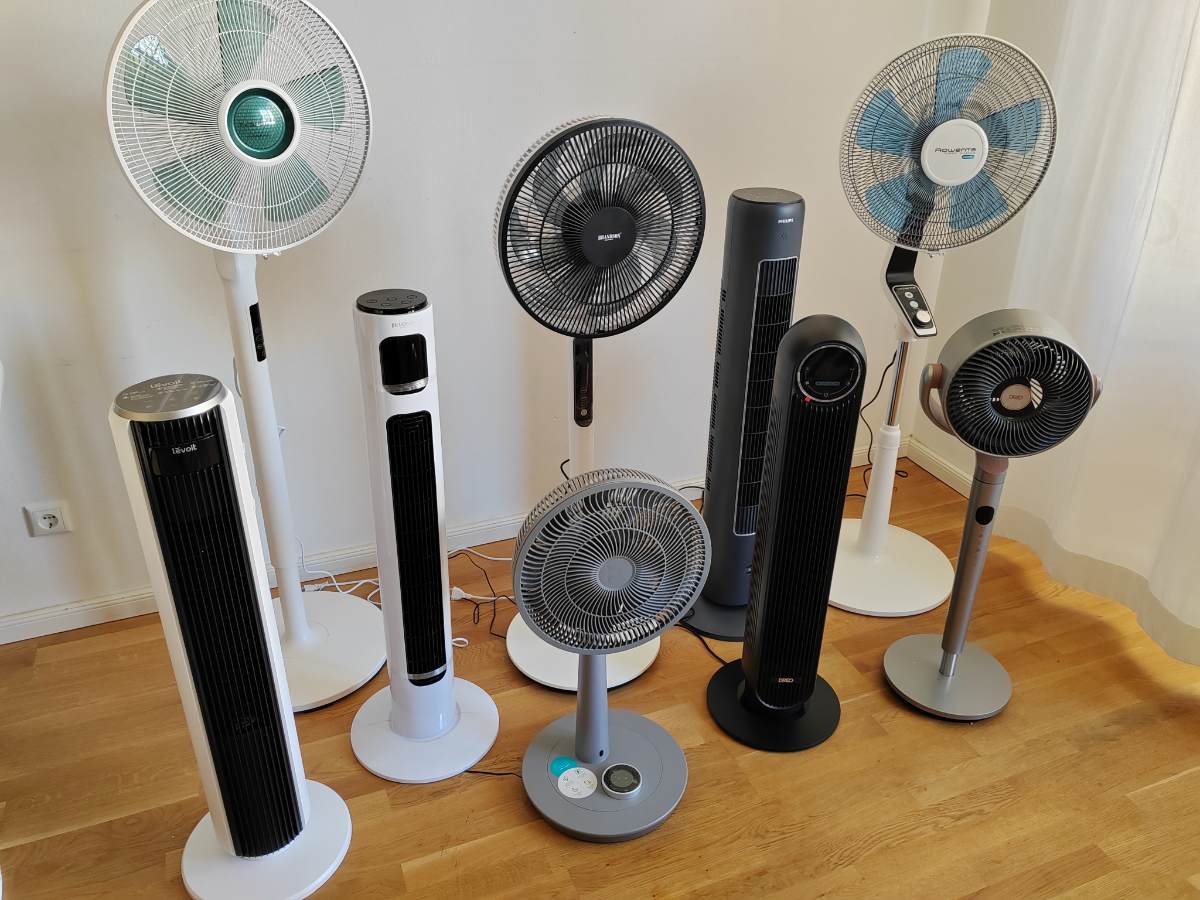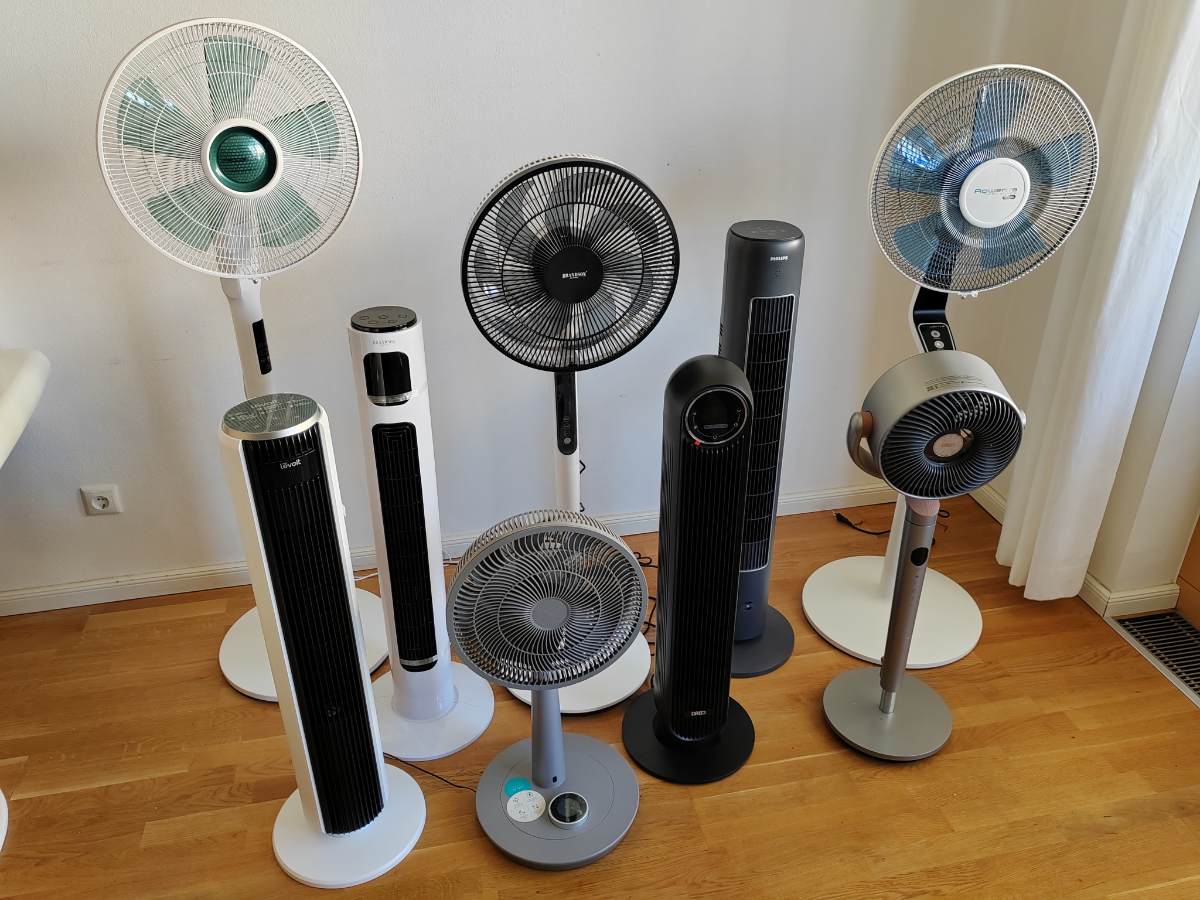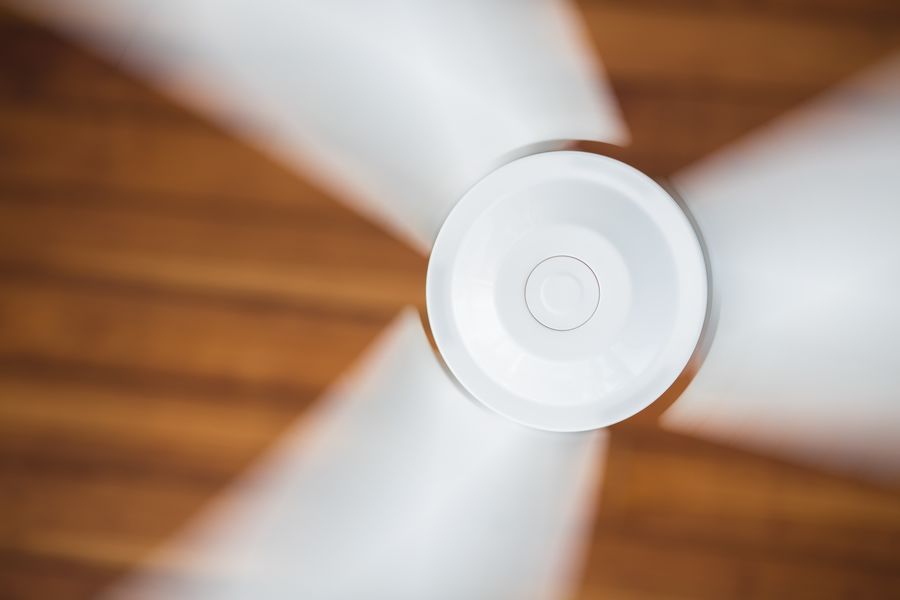Best Fans for the Bedroom: The Ultimate Comparison
Fans for the bedroom must fulfil special requirements. They run during the night and should be correspondingly quiet.
In this article, we look at the criteria for fans that are placed in bedrooms. This is followed by a selection of recommended models that I think are well suited for bedrooms.
Best fans for the bedroom:
Construction of the fan
The first image that most people have in their mind's eye when they think of fans is probably similar to this one:
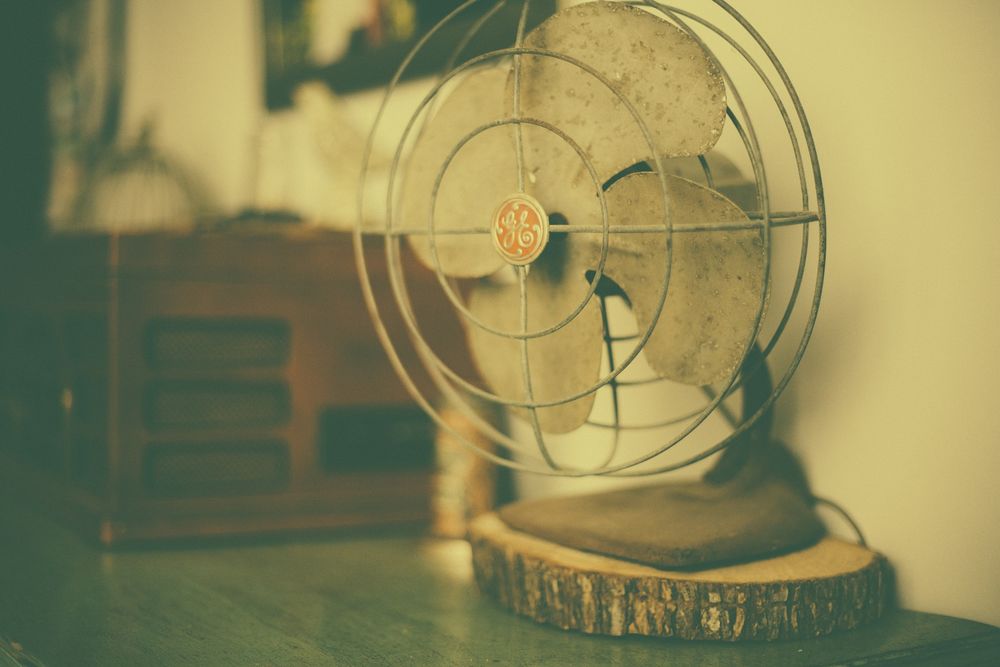
This is a table fan. In addition to this, there are other popular designs for fans. They all come with their own advantages and disadvantages. Depending on the objective you are pursuing with the fan, one type of construction may be more suitable than another.
Tower fans
The name gives it away: this design is much taller than it is wide, often cylindrical and has a single base. Like conventional table and pedestal fans, most tower fans can swivel back and forth. In doing so, they rotate on their base, allowing the airflow to reach more areas in the room.
Thanks to their shape, tower fans generally take up less space than pedestal fans, for example. A uniform, plain colouring can also ensure that they are less visually intrusive.
If you would like to find out more about the features and functionality of tower fans, I recommend the following article:

Tower fans
Comparison of recommended tower fans: These are the most important purchase criteria.
Ceiling fans
A ceiling fan can help with ventilation and heating and even look good at the same time. However, the latter depends heavily on the model.
The most obvious advantage of the ceiling fan is its space-saving positioning. At best, it could take up the space where a ceiling light would otherwise be installed. For this case, however, there are ceiling fans with built-in light sources such as light bulbs, LEDs, etc.
The disadvantage of a ceiling fan is its installation. It is definitely more difficult than a ceiling light: the weight and bulky dimensions can be an obstacle when installing it. I would therefore recommend that at least two people tackle this job.
The larger the blades, the quieter the fan.
Compared to other fans, ceiling fans have very large blades. Due to their size, they move more air in one rotation. As the speed of rotation is mainly responsible for the noise level, ceiling fans are very quiet. For this reason, they are highly recommended for the bedroom.
You can read more about ceiling fans in the following article. Among other things, the most important purchasing criteria for ceiling fans and recommended models are presented:
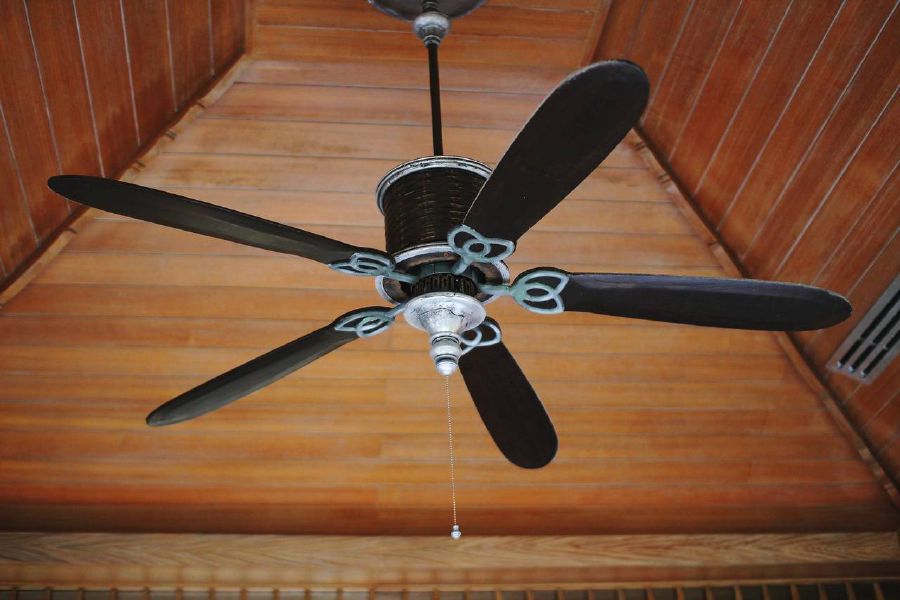
Ceiling fans
Recommended ceiling fans: These models are well suited for private households.
Bladeless fans
In recent years, more and more of these models have appeared on the market. Their advantages include new construction and design possibilities.
As many of the rotorless fans have only come onto the market in recent years, they are often equipped with modern additional functions. These include, for example, connection to the smart home:

Smart fans
These Fans are compatible with Smart Home (HomeKit, Google Assistant and Alexa).
The motor and the construction of louvres that move the air are often built into the base. Rotorless fans are therefore much quieter than pedestal or table fans. Rotorless fans are therefore also a suitable alternative for the bedroom.
You can read more about the exciting way these fans work here:

Bladeless fans
How rotorless fans work and which models are recommended.
Purchase criteria for fans for the bedroom
This mainly relates to the volume of the appliance. A peaceful night's sleep should be supported by the fan and not prevented. However, if you want to ensure pleasant temperatures on a permanent basis, a Mobile air conditioning without exhaust air hose an interesting alternative - especially for hot summer nights.
In addition to the noise level, these factors also play a role:
- Timer function
- Energy consumption
- Dimensions
Let's take a closer look at the individual points.
Volume
Fans generate a certain noise level. Keeping this as low as possible is the primary objective. The appliance itself and the way in which it is operated are decisive for a low noise level.
Select the lowest possible speed level
It rarely makes sense to set the fan to the highest setting overnight. In many cases, one of the lowest settings is sufficient.
On the one hand, the appliance runs all night long, so there is enough time for ventilation. On the other hand, excessive air flows can be perceived as unpleasant over time.
The lower the speed, the quieter the fan runs.
For these reasons, I would gradually feel my way upwards when setting the fan for the first time. If you can manage with a lower speed level, this usually also means a lower volume.
Pay attention to the manufacturer's volume specifications
The vast majority of manufacturers state the volume on the packaging or on the product page on the Internet.
However, this value is often misleading. This information will only help you if it is disclosed at which speed level the appliance has which volume.
If a volume is specified, this is usually the maximum volume. With this value and that of the air moved in cubic metres per hour, you can easily compare the products.
Fans for the bedroom should be below 45dB.
As described in the section on the different types of fans, some of them are inherently quieter:
These types often perform better in terms of noise compared to pedestal and table fans.
Timer function
If you do not want the fan to run all night, but only for a few hours, then a timer makes sense.
Alternatively, you can connect the appliance to a timer. However, many models already have a built-in timer function. When buying, pay attention to the preset time periods. While some fans allow you to set an exact time, others only allow you to choose between fixed running times (e.g. 1, 3 or 6 hours).
Energy consumption
The energy costs of a fan are all the more important the longer and more frequently it runs. As it will potentially run for several hours a day in the bedroom, it is worth doing the maths: If a model is more expensive to buy but uses less energy, it can still pay off for you.
To determine how much it will probably cost you to operate the fan, you can use this electricity cost calculator:
Cost per hour: 0.00 €
Cost per day: 0.00 €
Costs per month: 0.00 €
Costs per year: 0.00 €
Dimensions
To avoid cluttering up the bedroom, small and compact appliances are required. Make sure that the fan can stand freely and that none of its openings are blocked.
Recommended fans for the bedroom
In this list you will find fans that I think are suitable for the bedroom. I have compiled the list according to the most objective criteria possible and hope to give you a good overview:
Levoit 20dB Quiet Pedestal Fans - It couldn't be quieter
The Levoit pedestal fan impresses in our test with a perfect mix of smart control, quiet operationand strong airflowmaking it the top choice for Smart Home fans. Setup is a breeze – the fan is stable, modern-looking, and ready to go in just a few minutes.
Already on Level 1 (16dB) barely audible - almost imperceptible - and yet so powerful that from approx. 3 metres away caused a candle to flicker or go out has been installed. This creates a natural, pleasant air flow, ideal for quiet nights or concentrated work in the home office.
With a total of 12 speed levels, Timer function, vertical oscillation and one Remote control the Levoit offers everything you could wish for in a modern fan. From Level 4 increases the noise level slightlybut still remains surprisingly quiet compared to many other devices and at the highest level you have real power.
In our test, the Levoit pedestal fan was not only quieter than the Levoit tower in 2nd placebut also significantly quieter than the Rowenta (3rd place). The only small drawback: the the vertical oscillation range could be a bit wider. - A little more flexibility would be desirable here.
Simulating natural wind is often perceived as more pleasant than a constant flow of air over a long period of time.Our conclusion:
A real The quietest of fans - with functions that are otherwise only found in higher price ranges. A real insider tip for currently less than £130.
👉 Tip: Watch our videoWatch the video to see the Levoit in action. It's set to a high level here, so it's a bit louder than usual It couldn't be quieter - a snap of the fingers at the end as there is already a sound on here 😉
Levoit 21 dB tower fan - Deserves 2nd place
The Levoit is a little louder in direct comparison to the Brandson pedestal fan: 21dB (although you can hardly hear it) at the lowest level - this is almost exactly the manufacturer's specification of 20 dB and is one of the quietest models on the market.
The Assembly was completed in less than three minutesand the The stand was the quickest and easiest to install compared to other devices. Particularly impressive: Although it runs so quietly, the Air flow at level 1 strong enough to blow out a candle from a distance of three metres - a rare value in this appliance category.
On Stage 12, the Levoit delivers an air velocity of up to 7.9 m/s - more than enough for a quick cool-down on hot days. Thanks to the 90° oscillation the air flow is distributed evenly throughout the room. The LED display with temperature display, Remote control, 12 speed levels, 4 modes and a 12-hour timer round off the overall package. The fan in plain white also cuts a fine figure visually.
Important to know: With most tower fans, the air flow can be Do not adjust verticallybut flows always straight ahead. With a price of around £71.99 the Levoit offers a Impressive overall package of smooth running, performance and ease of use - Perfect for all those who also want to don't want to do without a cool breeze, but appreciate absolute peace and quiet.
Rowenta Turbo Silence Extreme + - 23 dB with very large rotor blade
The Rowenta Turbo Silence Extreme+ scores in the test with the best workmanship and the highest quality design among all devices tested. The Stand is particularly stable and heavywhich ensures a secure grip - ideal for uneven floors. The large rotor with multiple blades not only looks impressive, but also delivers plenty of power. On Level 1 was measured at around 23 dBwhich makes him one of the quieter pedestal fans perfect for quiet environments. But those who Power searchshe gets on Level 16 supplied more than adequately - Here the Rowenta moves an extremely large amount of air.
Apart from its enormous power, the Rowenta product has nothing to hide:
- 16 levels
- Natural wind mode
- swivels 120 degrees
- Timer up to 12 hours
- Remote control
Exciting: In direct comparison to the Normal Rowenta Turbo Silence pedestal fan (see below in the test), the Extreme+ variant significantly quieter a real difference in everyday life, which is particularly noticeable in bedrooms. For those who value high-quality workmanship and is prepared to £149.00 to investgets an appliance that is visually and functionally impressive. A quiet, powerful fan for anyone who doesn't want to compromise on quality.
Duux Whisper 2 pedestal fan - As quiet as 3rd place
The Duux Whisper Flex Smart is an elegant, very quiet fan that almost made it into the top 3 in my test. Especially due to its Swivelling function in both directionsIts clean design and flexibility make it stand out from many standard models.
Which is immediately noticeable: It is really quiet. Although the manufacturer specifies 13 dB, in my test we were at a realistic approx. 22 dB at level 1 - but that is also Extremely quiet. Ideal for the bedroom, home office or if you simply don't want any annoying noises. With 26 speed levelsa natural wind mode and a Night mode there is something for every situation.
Particularly cool is the Swivelling function: The fan rotates Horizontally up to 90° and vertically up to 95 - which in practice looks as if it covers the entire room. Combined with a Wind range of up to 15 metres it brings a lot of movement into the air - without getting loud.
- 26 steps
- Natural wind mode
- Horizontal (90⁰) and vertical (95⁰) oscillation
- Timer up to 12 hours
- Remote control
Another advantage: The Height is adjustable from approx. 73.5 to 95 cm - The Duux can be used both as a table fan and as a free-standing appliance. With just under 4 kg weight it is super easy to move. The Structure is simpleeverything clicks into place cleanly - it works even without instructions.
There is some criticism of the operation: The rotary wheel is stylish, but you must confirm each entry with the centre button - that seems a bit fiddly. The remote control is a help, but even here you sometimes need a second try.
Design and material? Simple and high-qualityeven if the fan is mainly made of plastic. The overall package looks well thought out and stable.
With a price of around £ 140 the Duux is not quite cheap, but if you value Optics, quiet operation and precise control it is definitely an exciting alternative to the well-known top dogs.
Ultty rotorless fan - Combi for better sleep
Anyone looking for a fan that can do more than just make wind should definitely take a look at the Ultty tower fan. It combines quiet cooling with an integrated HEPA air purifier - a concept that is particularly interesting for allergy sufferers, smokers or people in urban environments. I took a closer look at the appliance - and was pleasantly surprised.
Whisper-quiet breeze & high air quality
What is immediately impressive is the volume - or rather, how little you hear of it. Even on the medium setting, the appliance runs so quietly that you almost forget it's on. Ideal for bedrooms, offices or the baby's room. The night mode, in which the display also dims automatically, is particularly practical. This ensures undisturbed sleep and a pleasantly cool room climate - without annoying buzzing or brightly lit numbers.
The integrated HEPA13 filter also does a solid job. According to the manufacturer, it removes 99.97 % of all ultra-fine particles - and you can tell. Many users report noticeably better air, freer breathing and fewer allergy symptoms. The device cleans the air five times per hour in an area of up to 20 m² - which is ideal for smaller rooms or bedrooms.
Operation & comfort
Operation is simple and well thought out. The LED touchscreen responds precisely, alternatively the fan can be conveniently controlled by remote control - particularly practical from the bed or sofa. There are 3 operating modes (standard, natural wind, sleep mode) and 9 speed levels available. A timer (up to 8 hours), 90° oscillation and a 30° adjustable air outlet are also included - a lot has really been thought of.
The air circulation is pleasantly even, and the rotorless design means there are no annoying air vortices or loud rotor noises. And this is a very reassuring safety solution, especially for households with children or pets.
Weaknesses? Reductions in power at high level
Where the Ultty can easily be beaten is in its absolute air performance. Anyone expecting a gale-force breeze at the highest level will be disappointed. Although air is still moved at level 9, compared to classic tower fans without an air filter, it simply lacks a bit of pulling power. It also gets noticeably louder at the highest level - a classic problem with fan/air purifier combinations that have to work harder due to the filter.
But if you prefer it to be gentle, quiet and with added value, this is the right place for you.
Conclusion
The Ultty tower fan is not a wind maker for heat battles - but a stylish, well thought-out all-rounder for permanently better air and pleasant cooling in everyday life. Particularly recommended for sensitive sleepers, allergy sufferers or parents looking for a safe, quiet device. If you want maximum power, you should also buy a classic fan - but for everything else, the Ultty is a real recommendation.
Rowenta rotorless 2 in1 air cleaning fan - Quiet, stylish, powerful
The Rowenta Eclipse QU5030 is a real all-rounder: rotorless fan, air purifier and - depending on the model - even with a heating function. I scrutinised the 2-in-1 model and was curious to see whether the combination of function and design would also be convincing in practice.
Design & workmanship - more than just an eye-catcher
The Rowenta Eclipse has a high-quality finish, a modern design and looks great - especially in modern living spaces. Operation is intuitive, both directly on the appliance and by remote control. Assembly is simple and the filters can be inserted in no time at all. A nice detail: the packaging uses very little plastic - a plus point in terms of sustainability.
Whispering operation with real effect
The fan is one thing above all: quiet. Barely audible in silent mode, it is a pleasant companion without annoying background noise, even at night. The air is distributed evenly and efficiently - up to 8 metres away according to the manufacturer. Ideal for medium-sized to large rooms. Thanks to 12 speed levels and two operating modes (night & auto), the intensity can be optimally adjusted. Particularly practical: in auto mode, the device regulates the power automatically based on the ambient temperature.
Another highlight is the integrated air purifier with two high-performance filters. These remove up to 99.95 % of all fine particles - perfect for allergy sufferers, pet owners or anyone who simply wants to enjoy better indoor air. User reports confirm noticeable improvements in the indoor climate and fewer allergy complaints.
Minor points of criticism? Yes, but not a dealbreaker
The remote control could be of a slightly higher quality for a device in this price range - but it is functionally flawless. The 2-in-1 model has no app control at all, which is somewhat surprising considering its otherwise smart appearance. In addition, the device is not exactly lightweight - anyone who wants to transport it frequently between floors should keep this in mind.
Conclusion
The Rowenta Eclipse QU5030 is a sophisticated, powerful appliance that not only cools but also cleans the air effectively. It is a real asset for people with allergies or sensitive sleep patterns. The design, range of functions and low noise level are just right - and justify the slightly higher price.
Conclusion
A fan in the bedroom can provide refreshment on hot nights. Together with an open window, it supports the exchange of air and helps you to improve the indoor climate.
When looking for a suitable model, pay attention to its volume, energy consumption and a timer function. These key data sometimes determine how suitable the appliance is for a bedroom.
If you want to find out more about particularly quiet fans, I recommend this article:

Quiet fans
Comparison of very quiet fans. Perfect for use in the bedroom.

